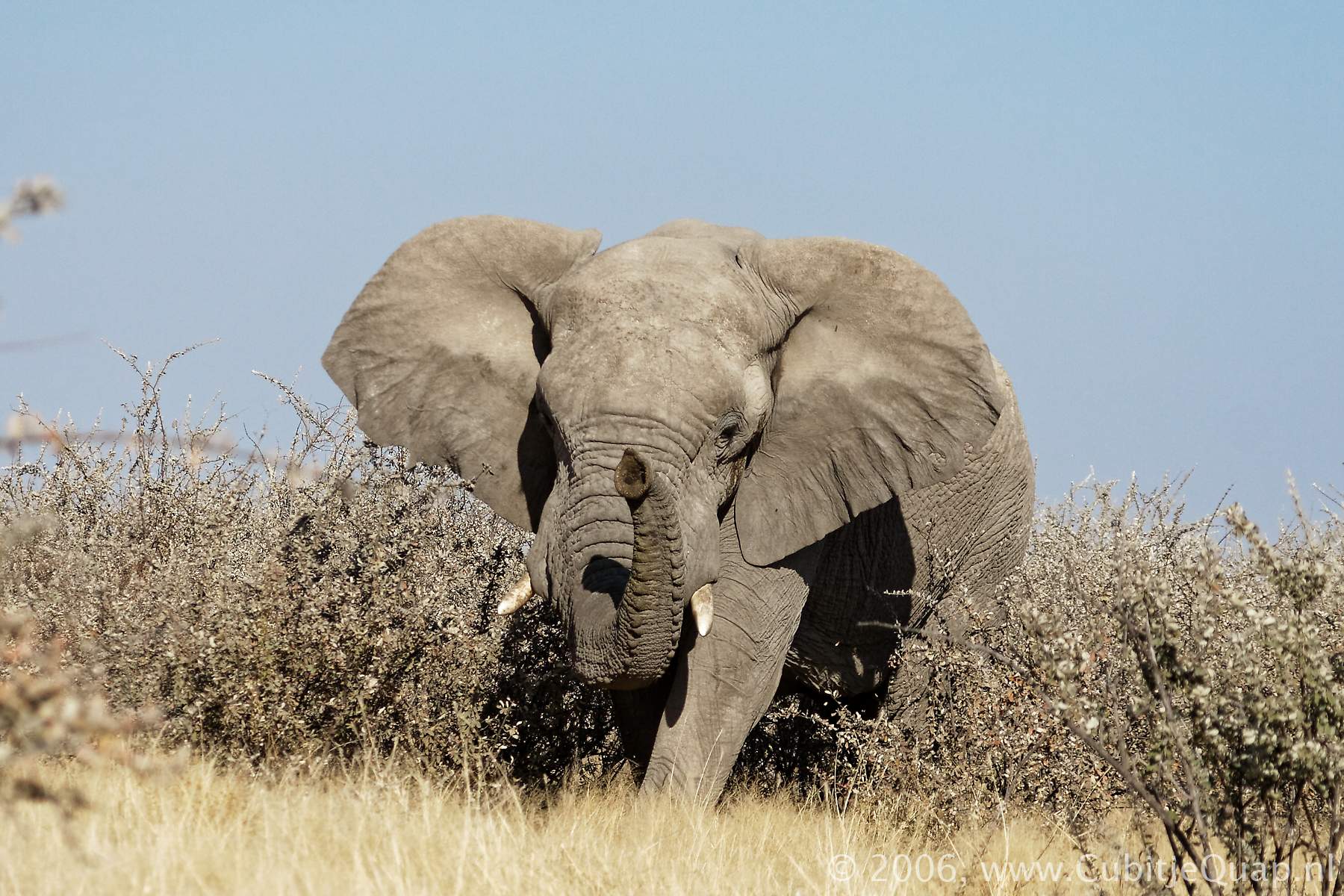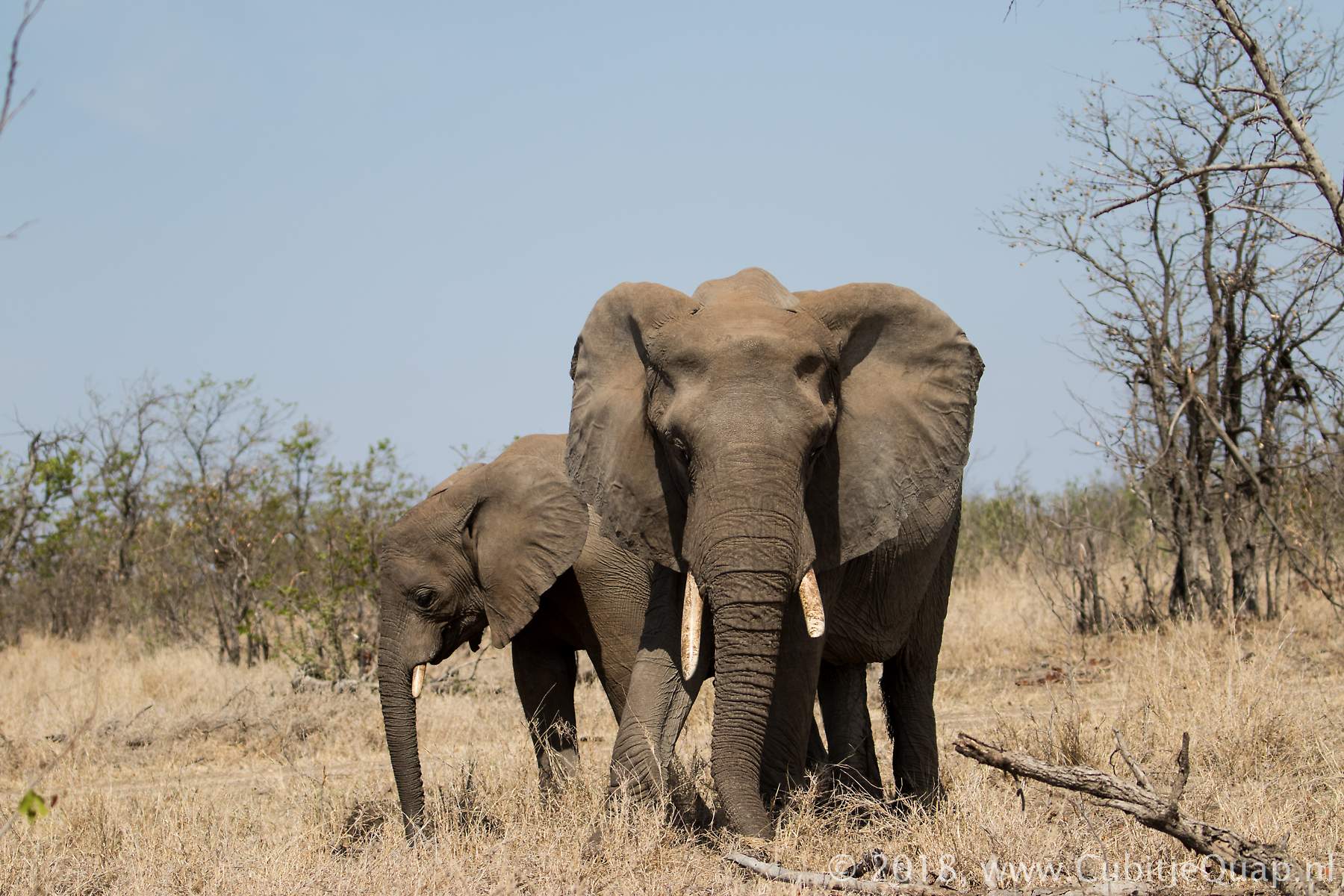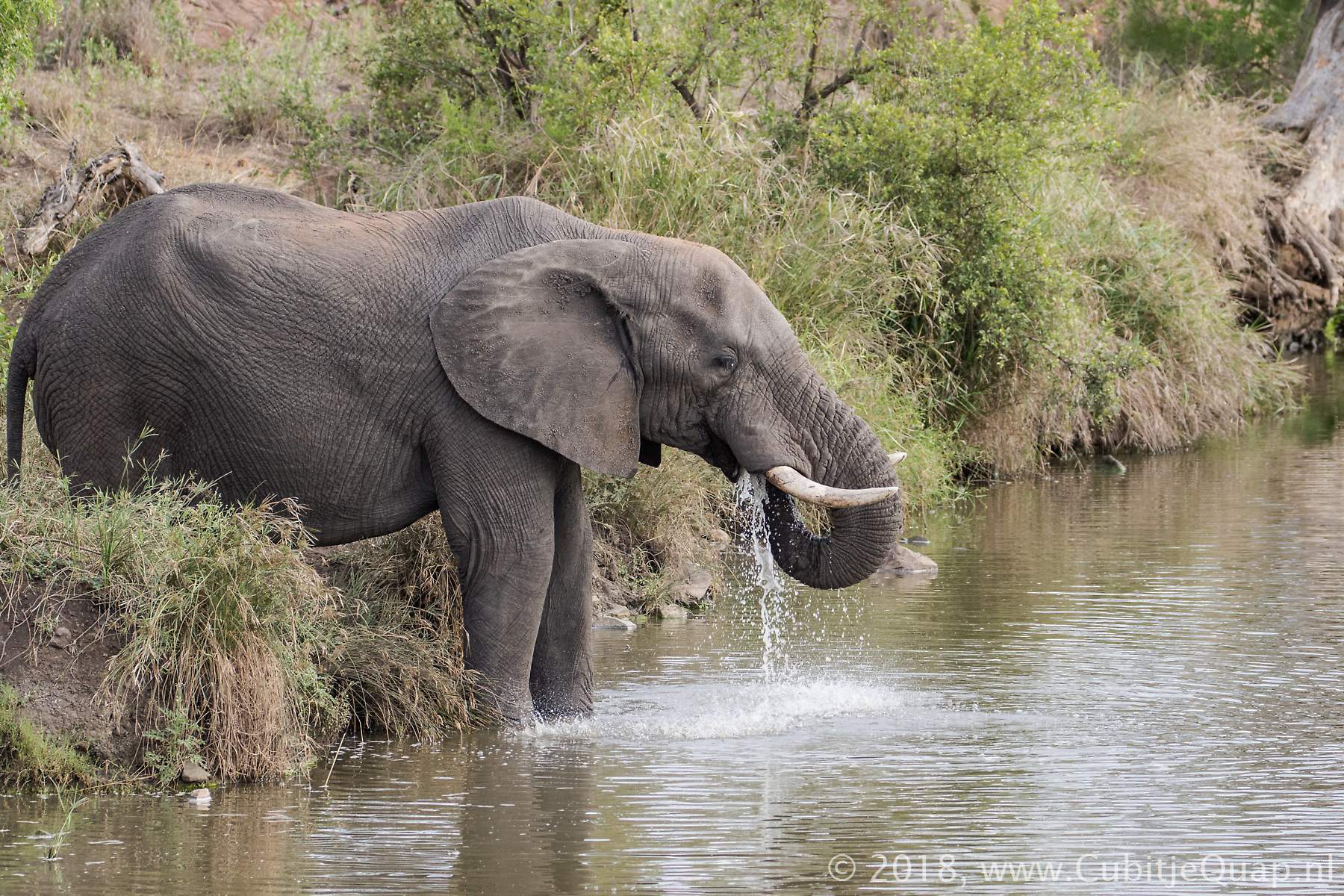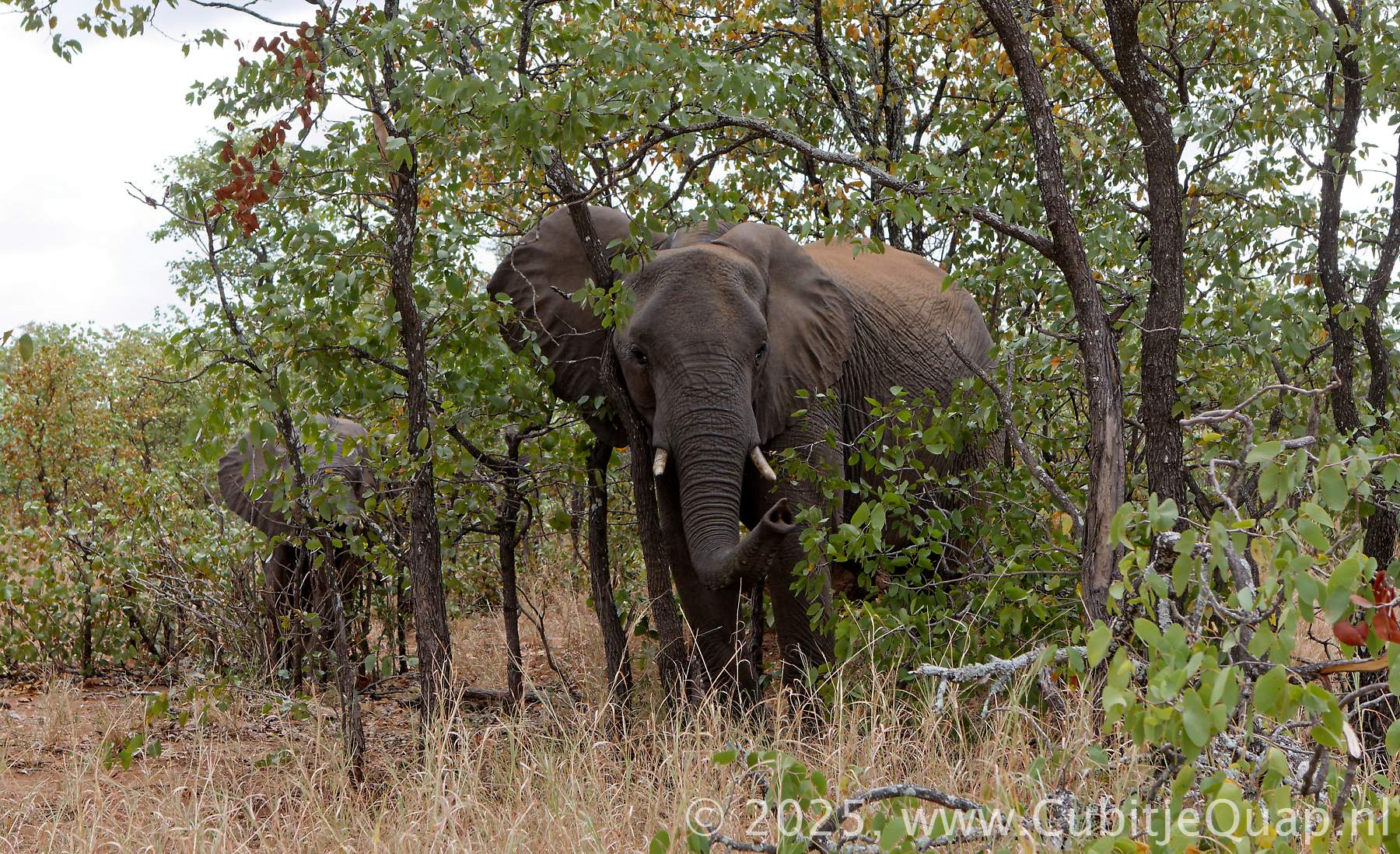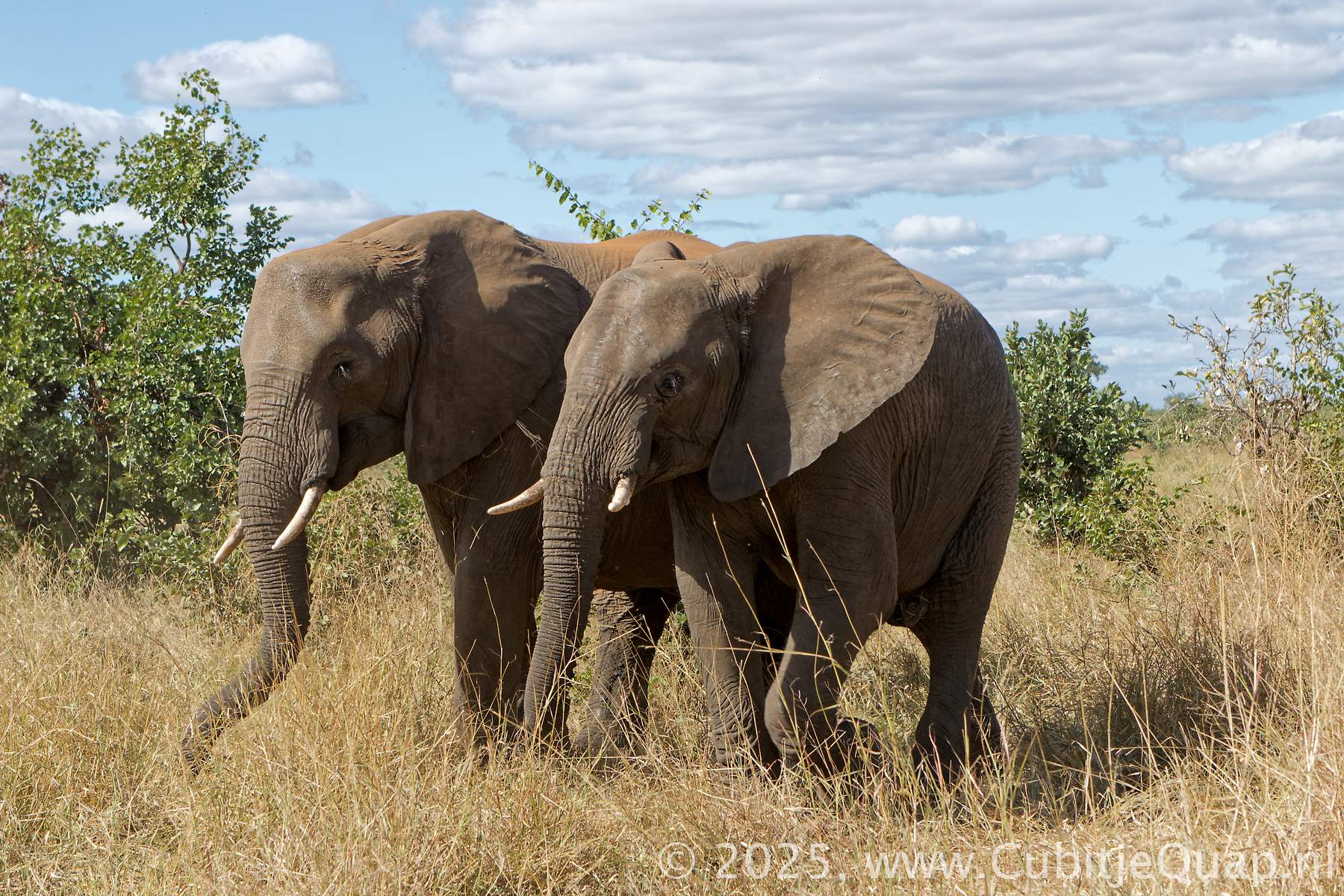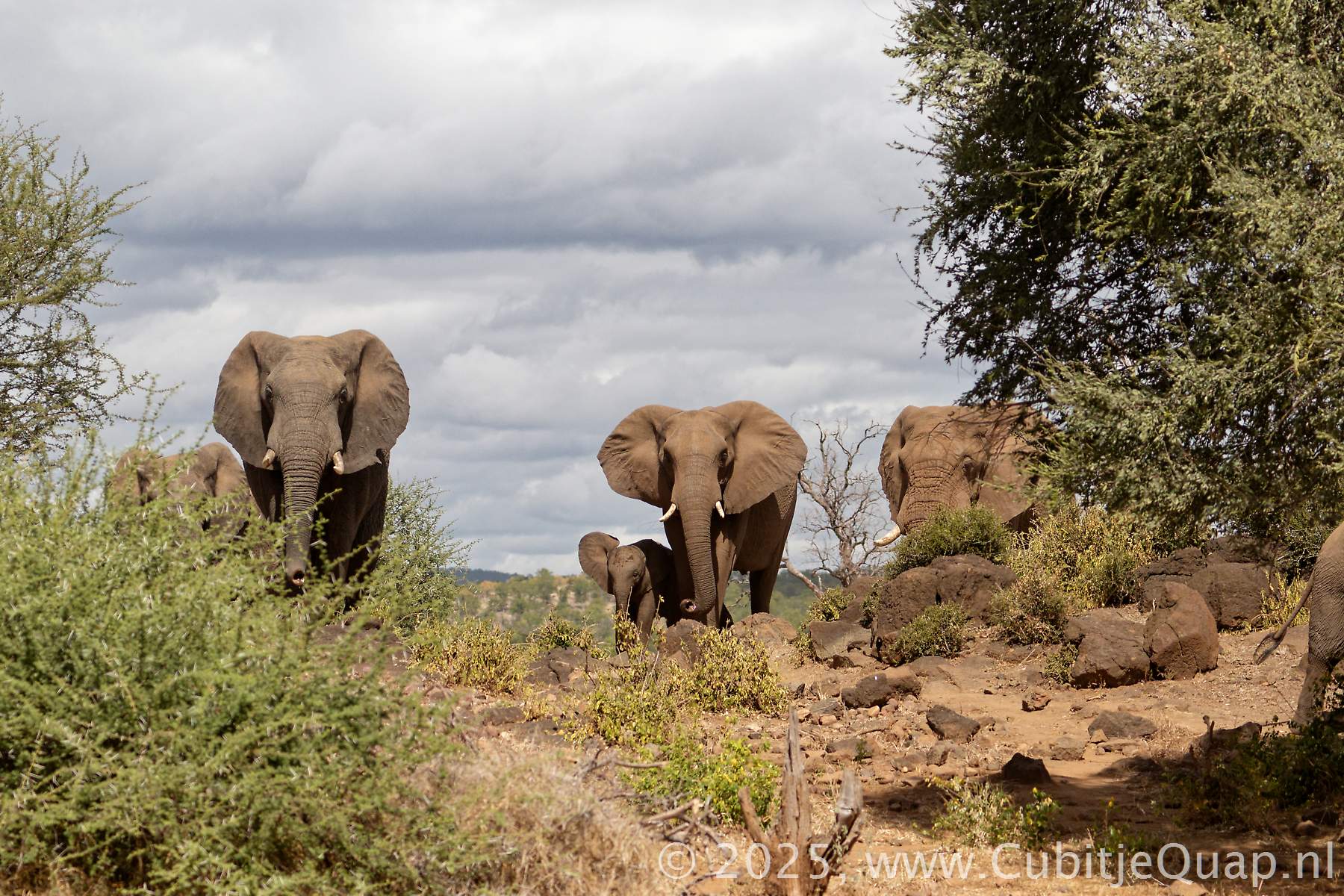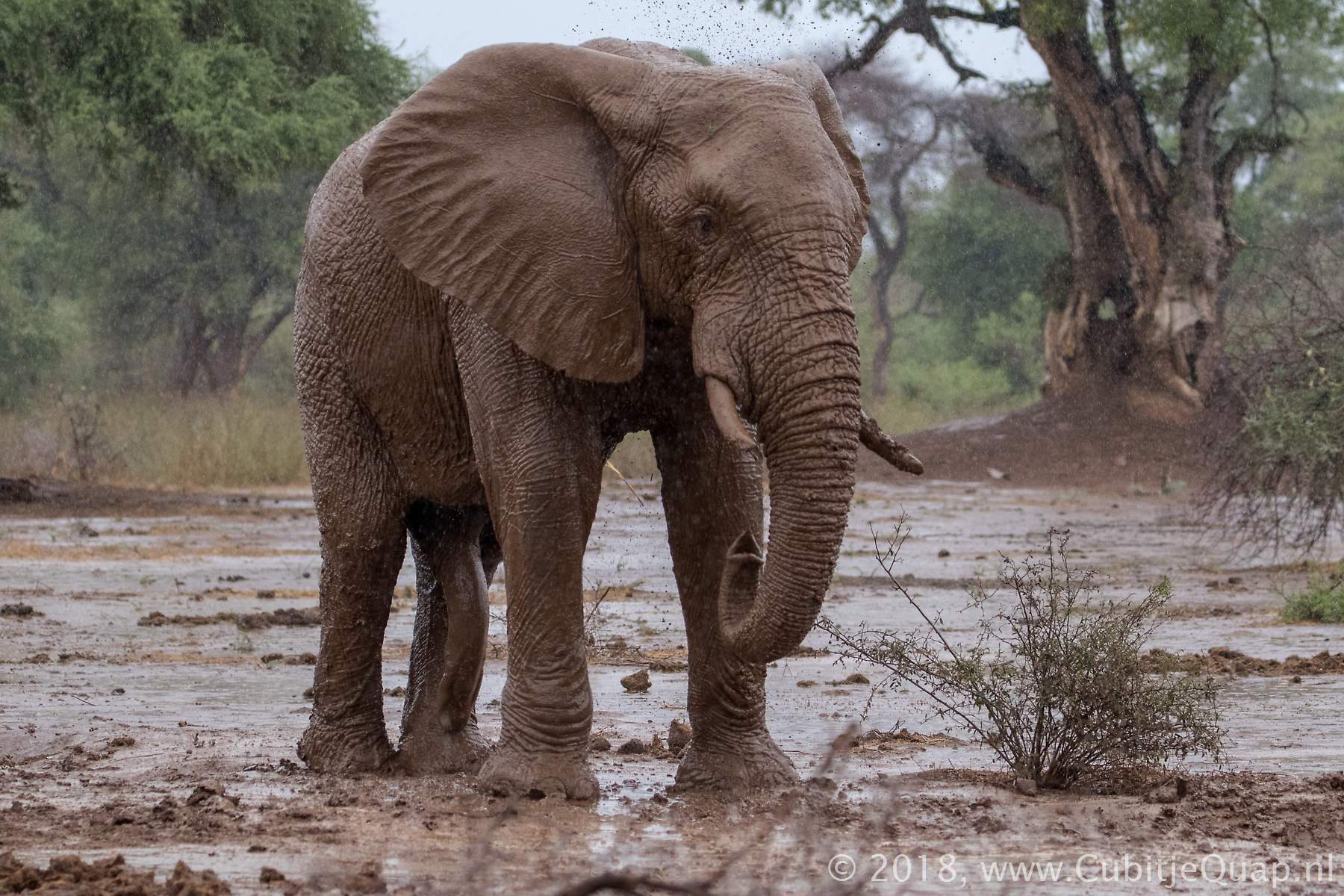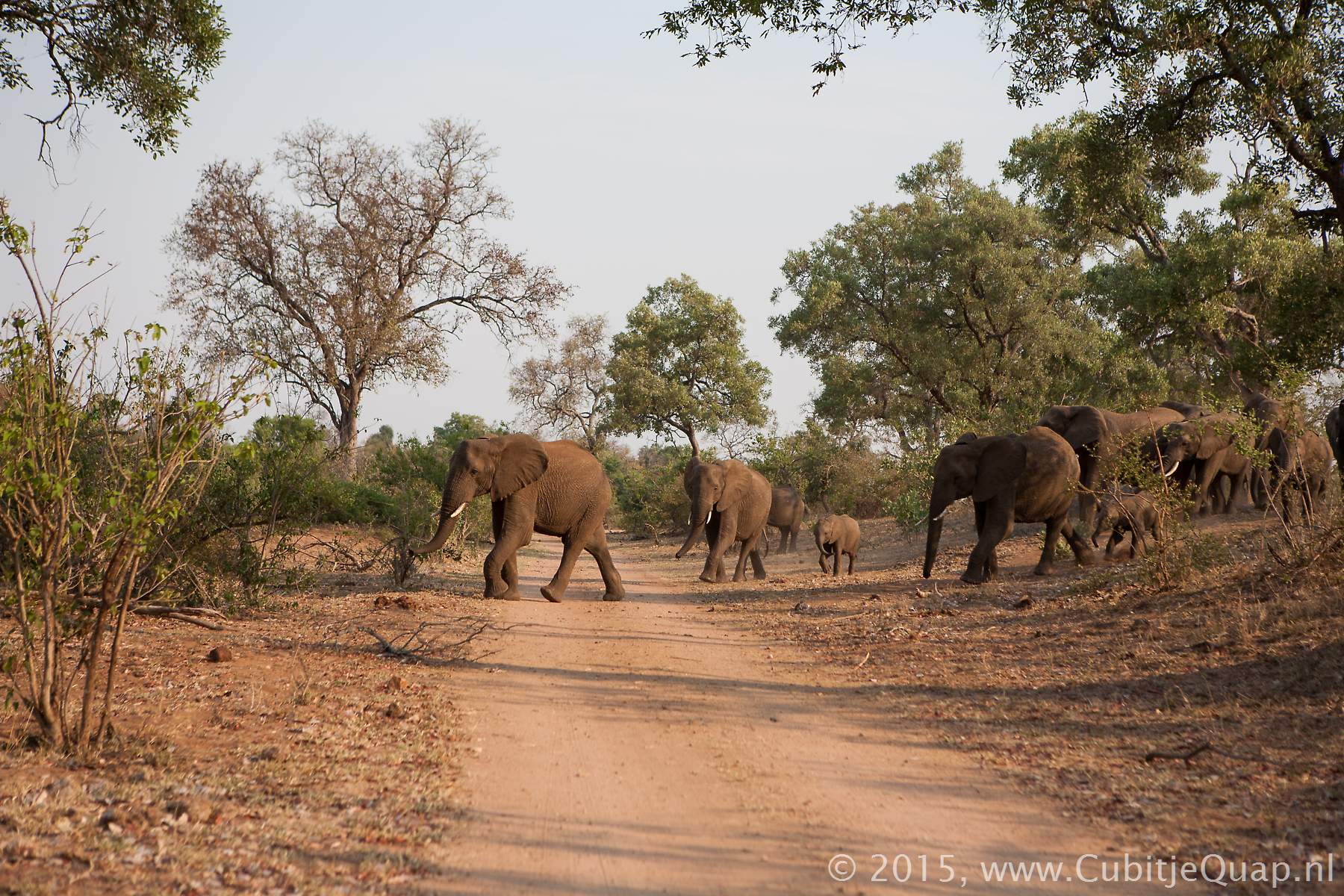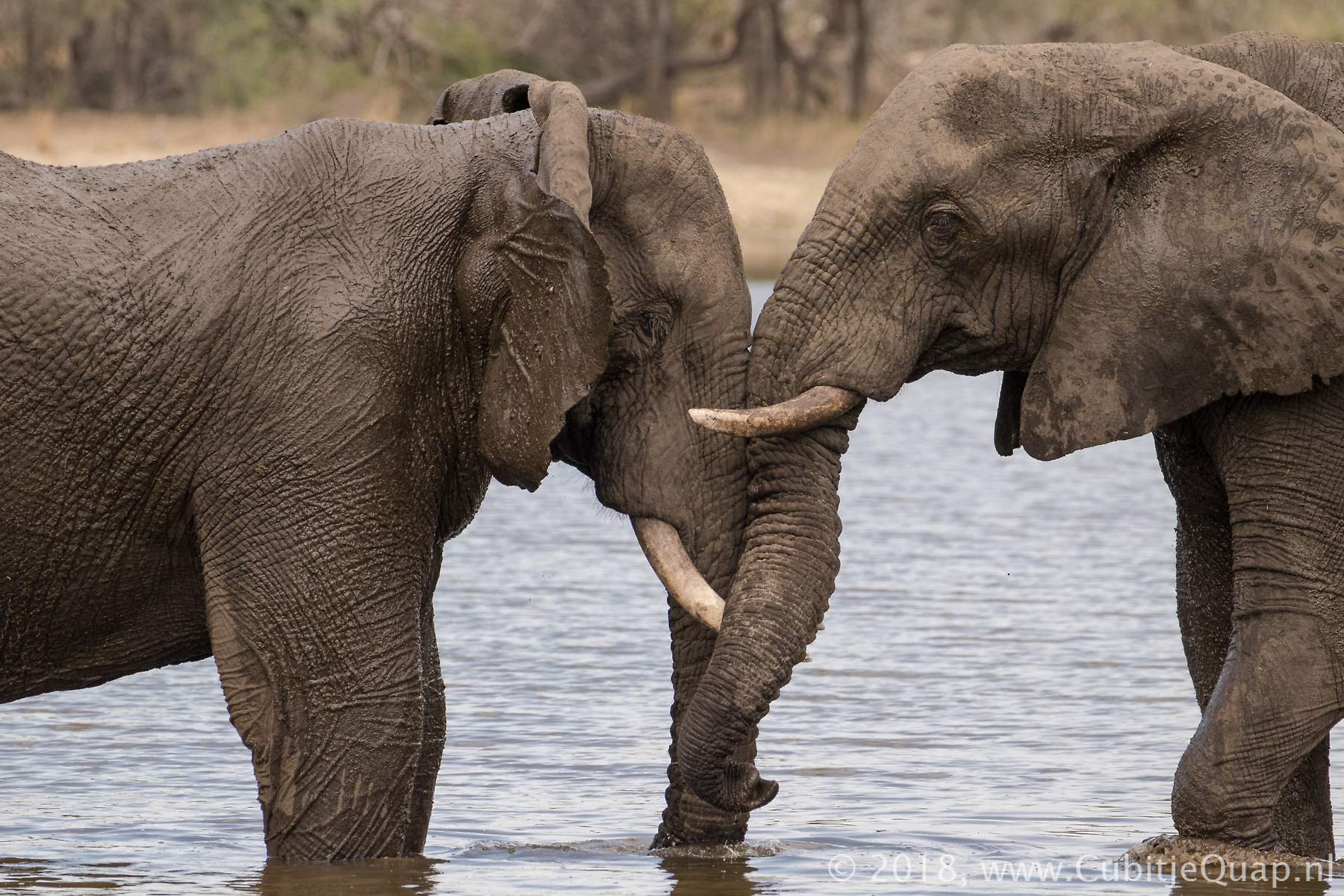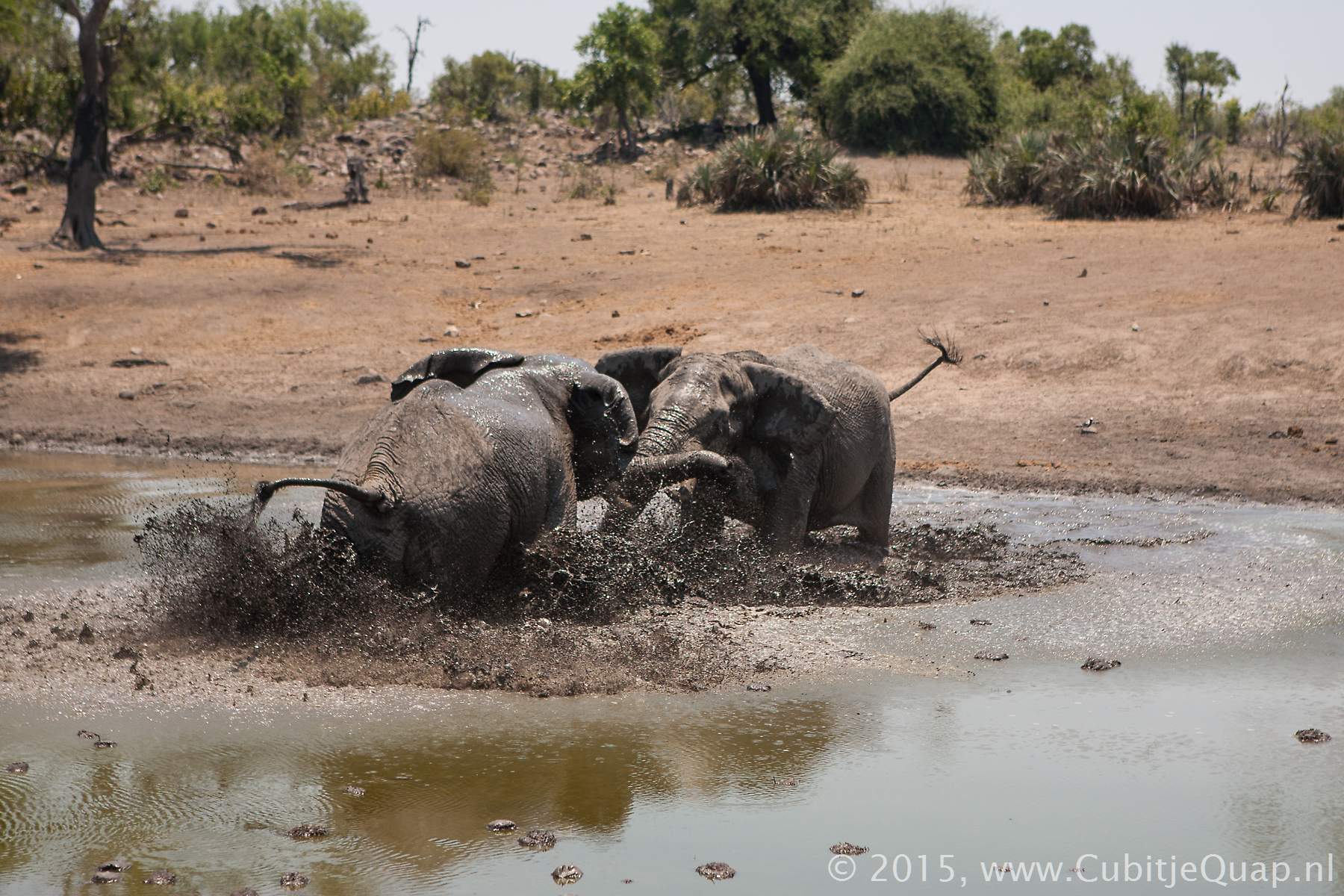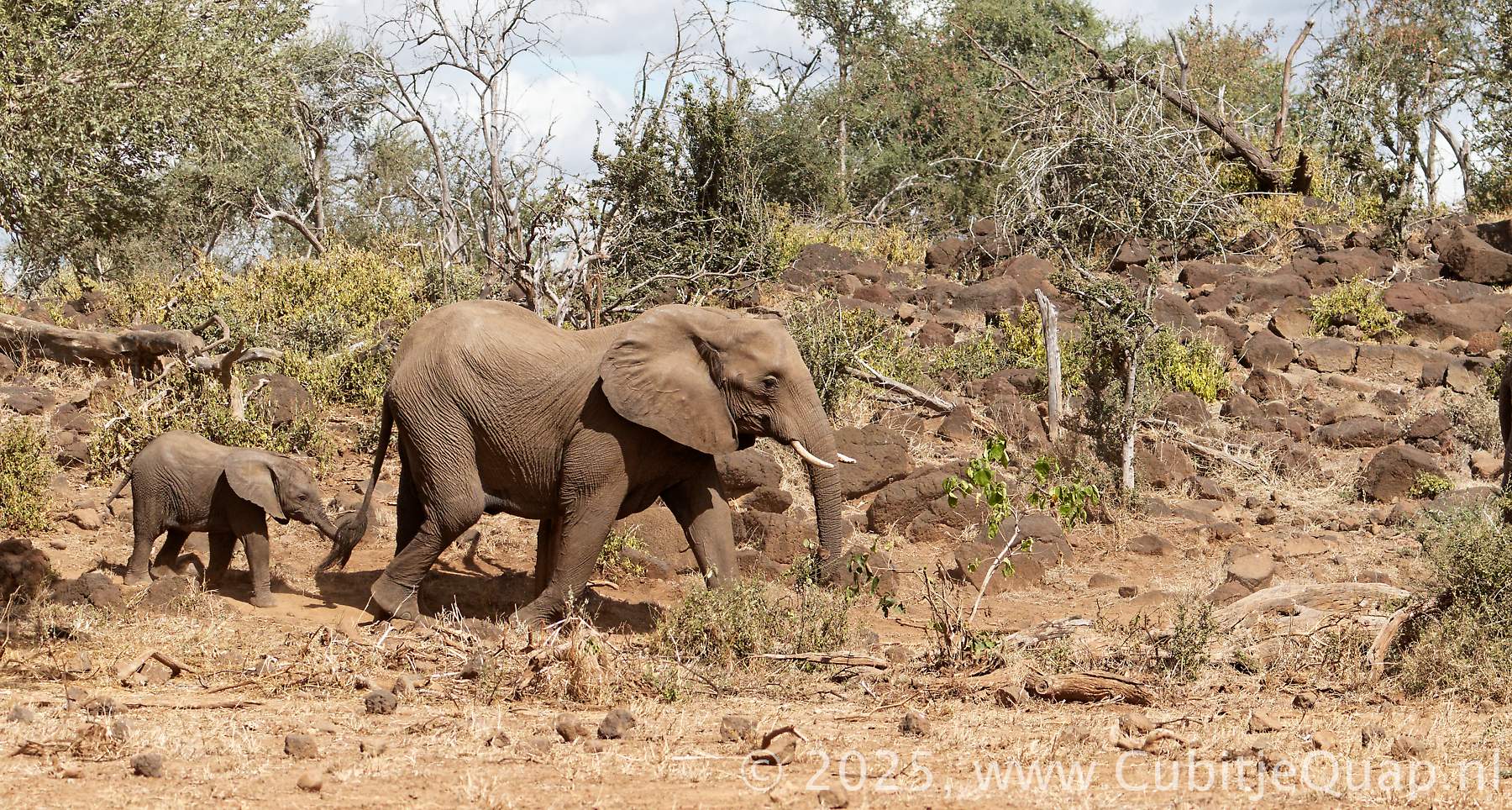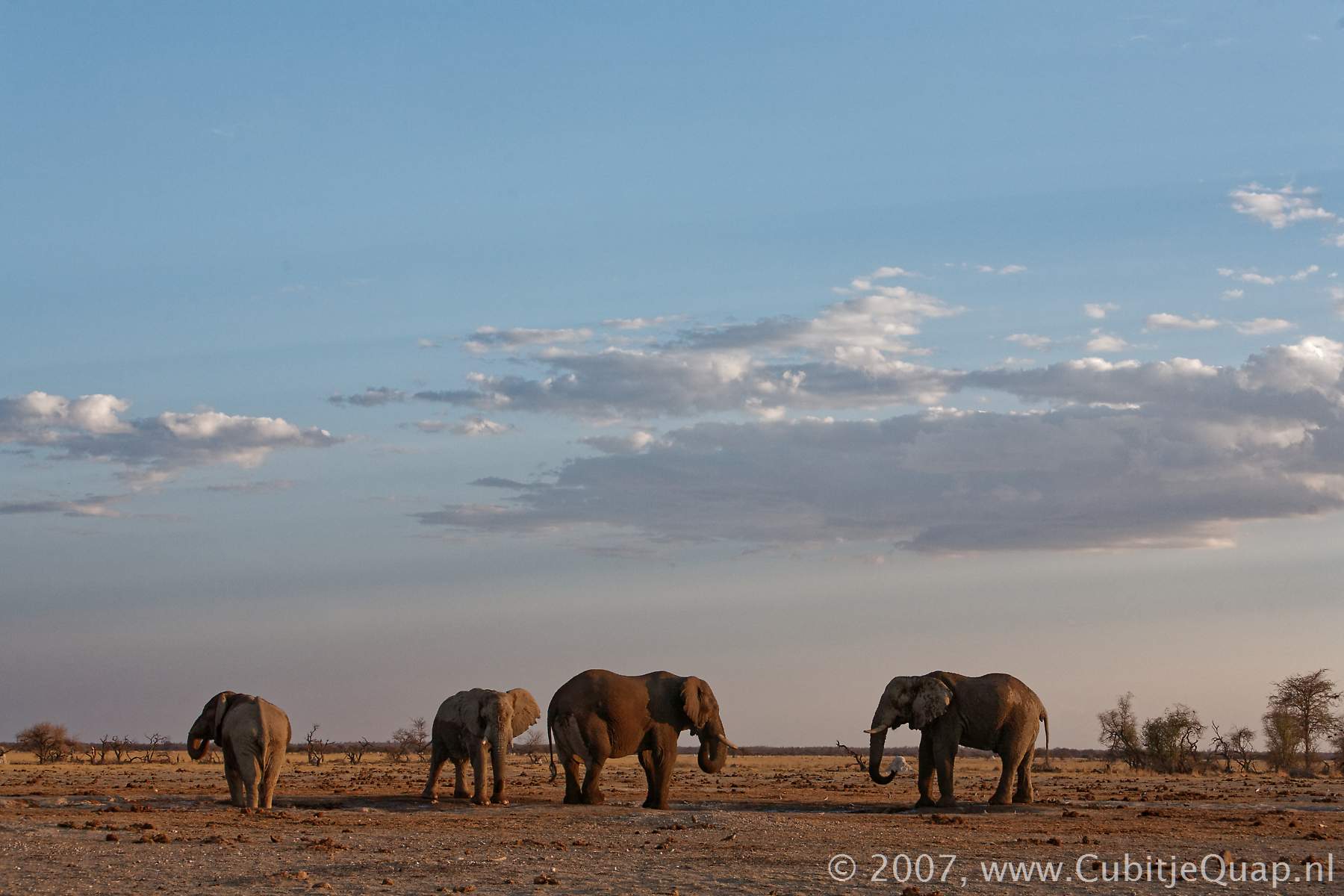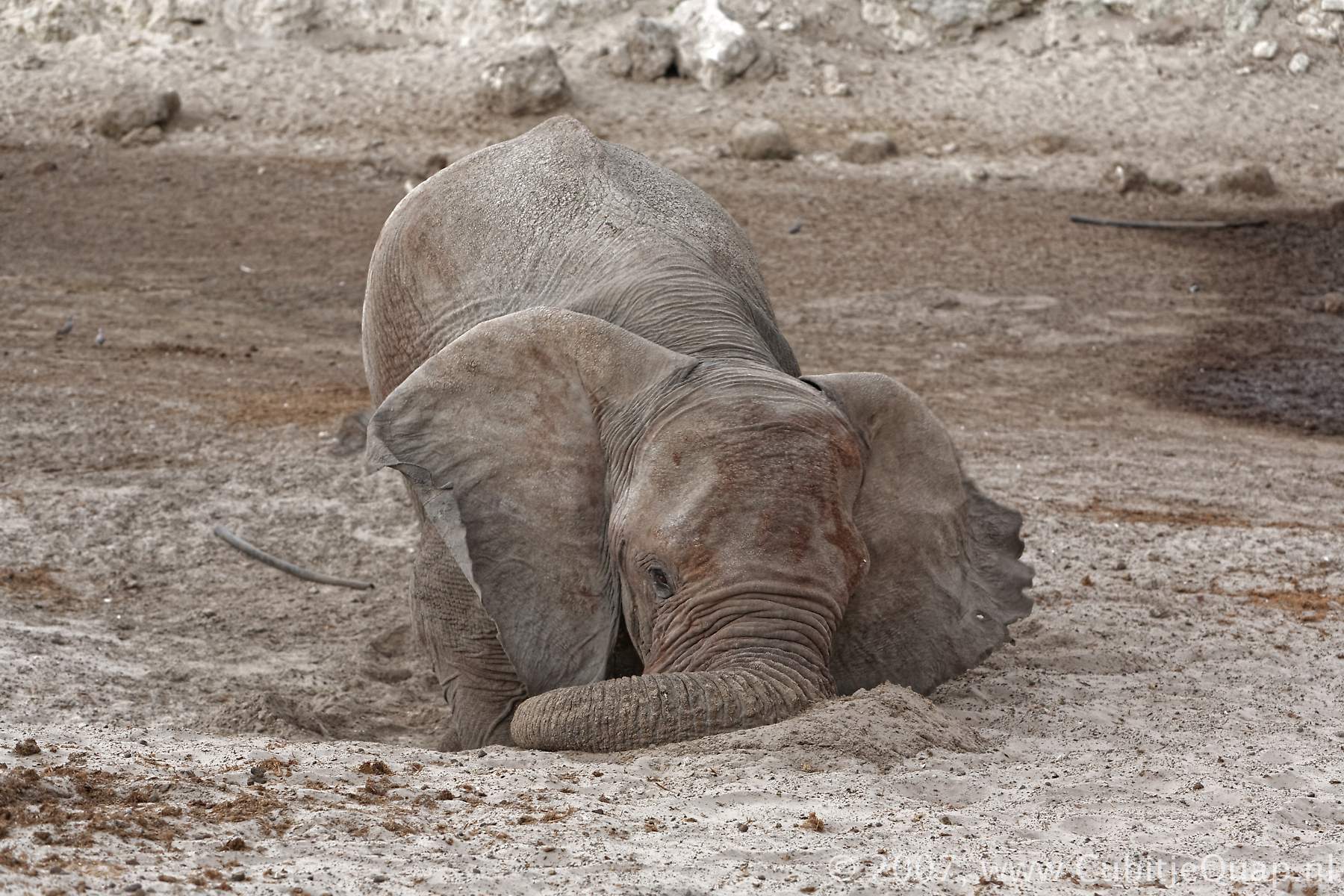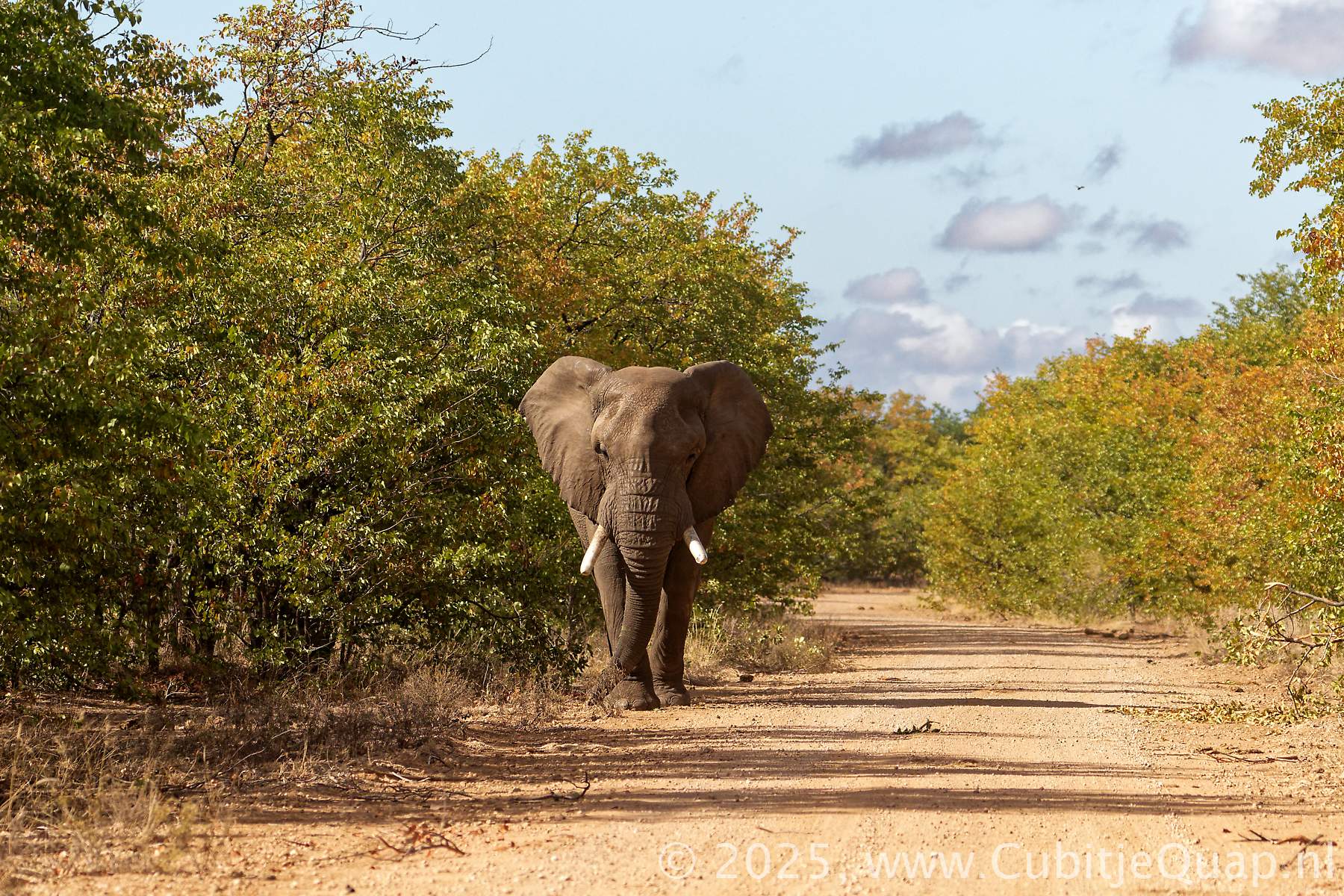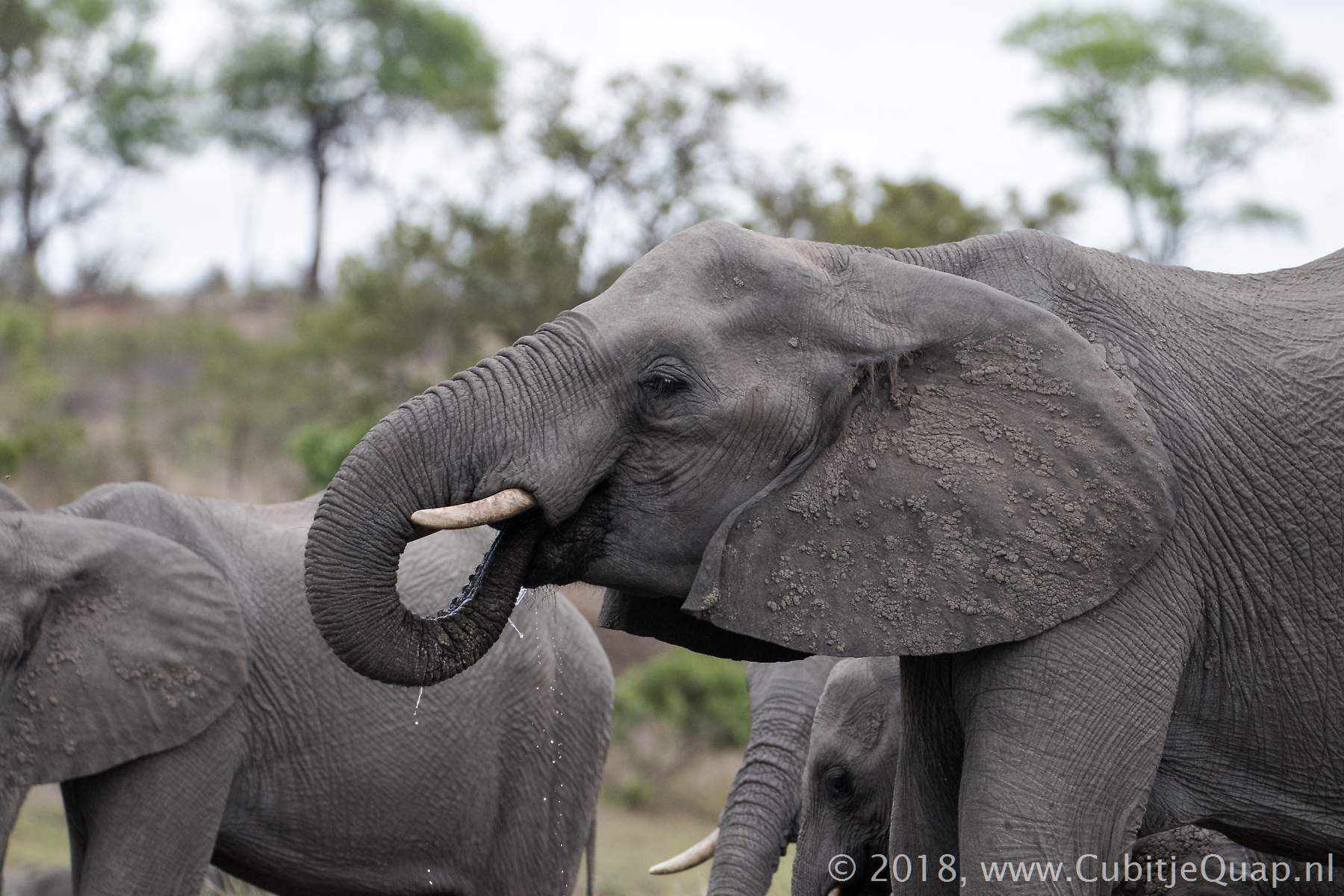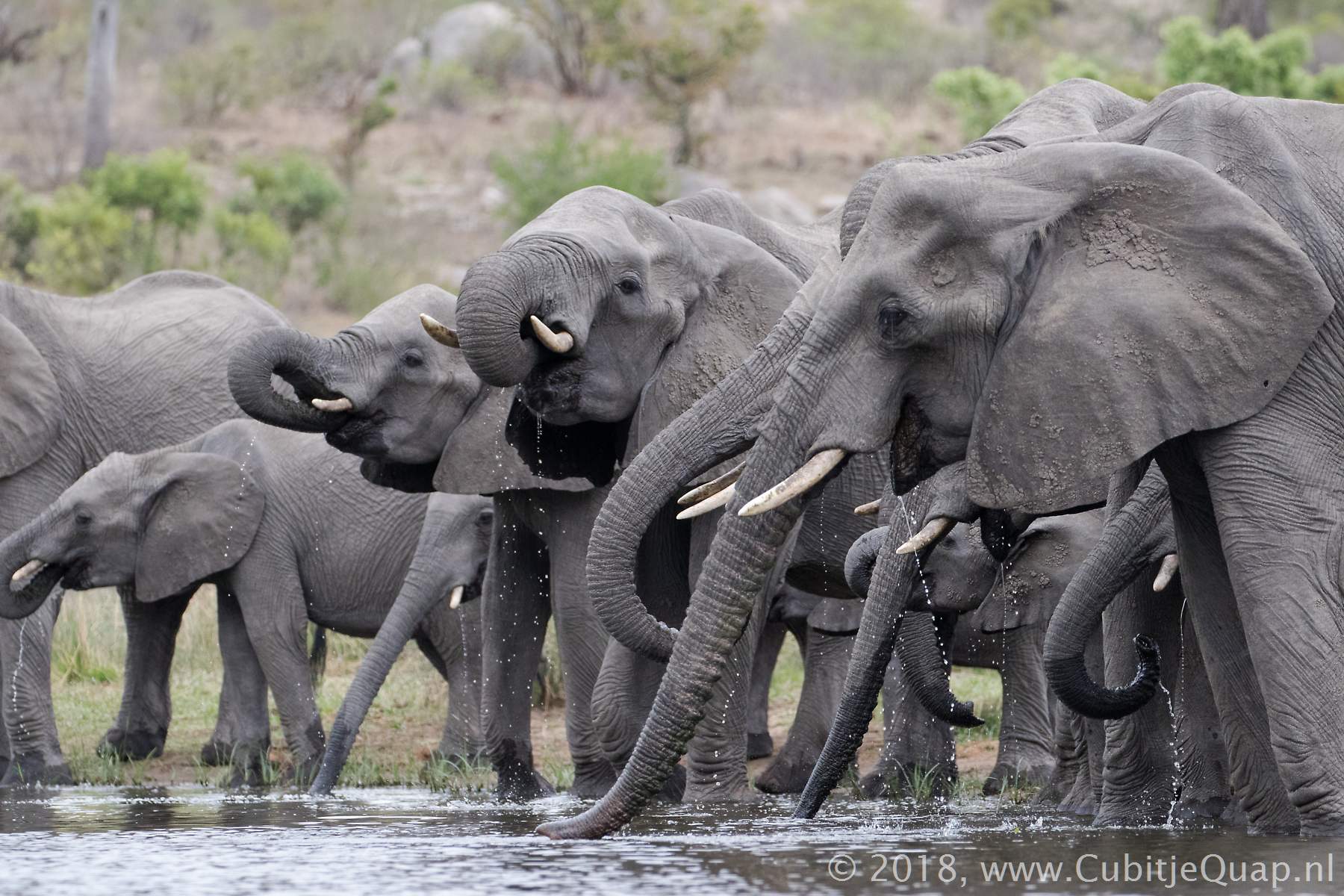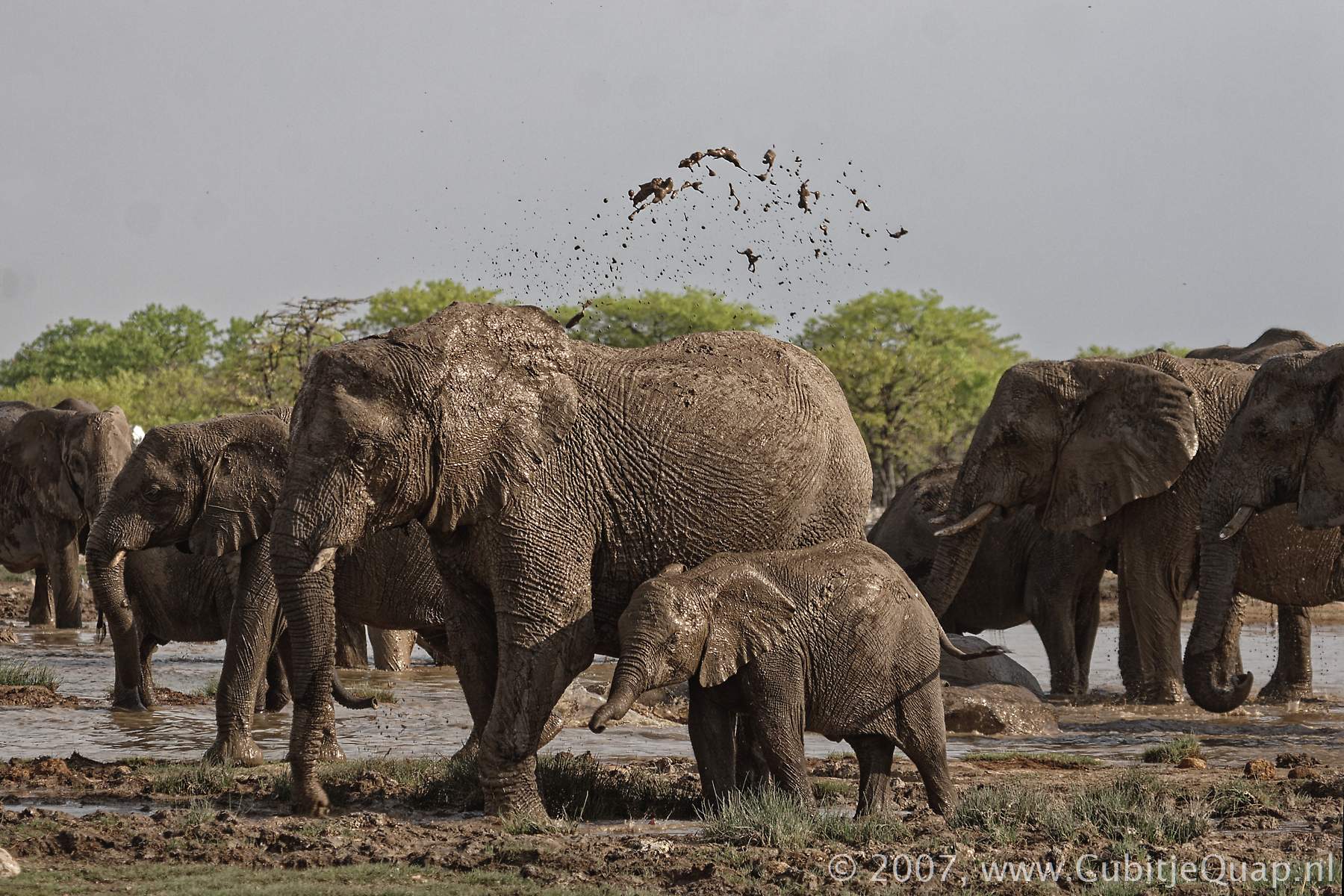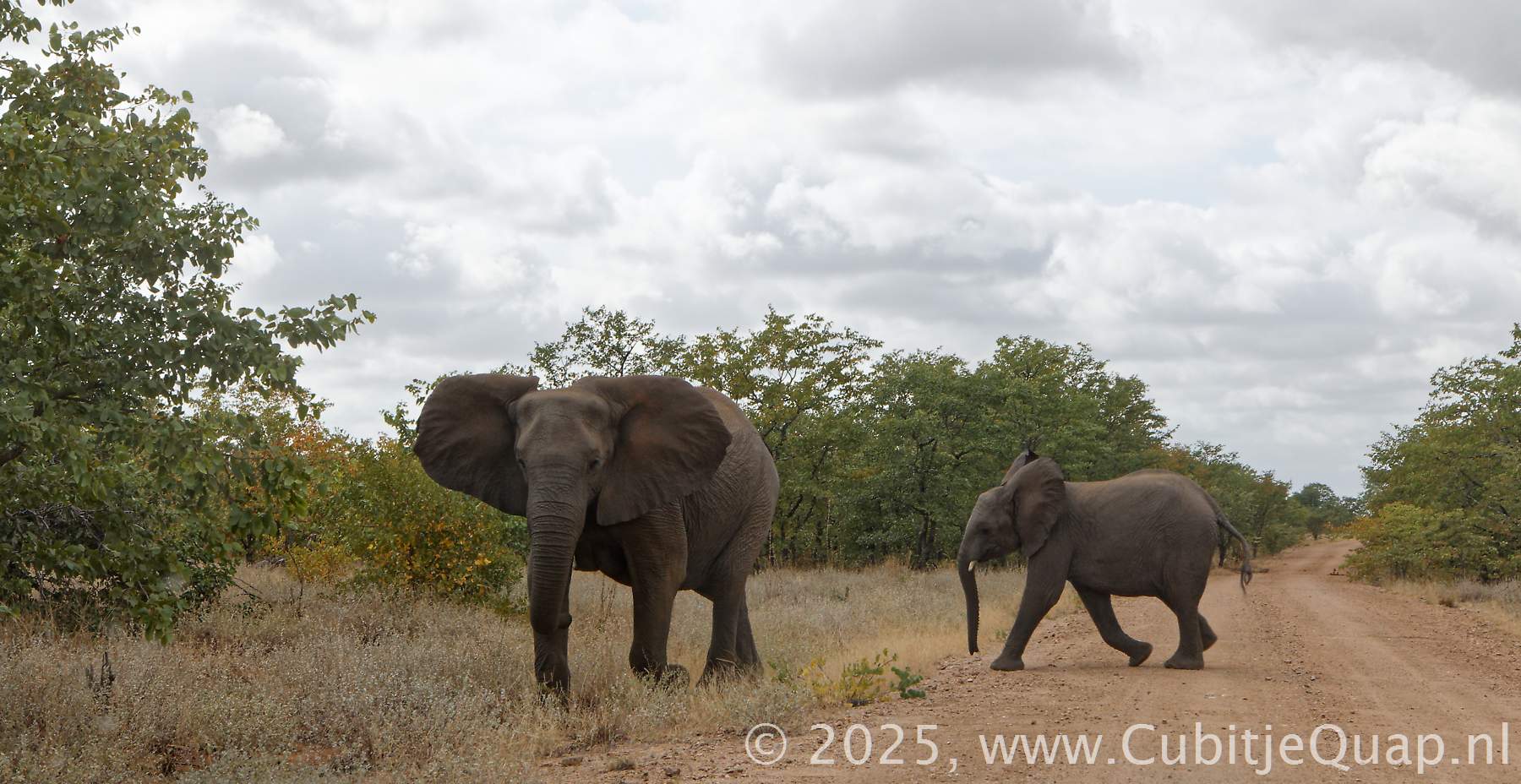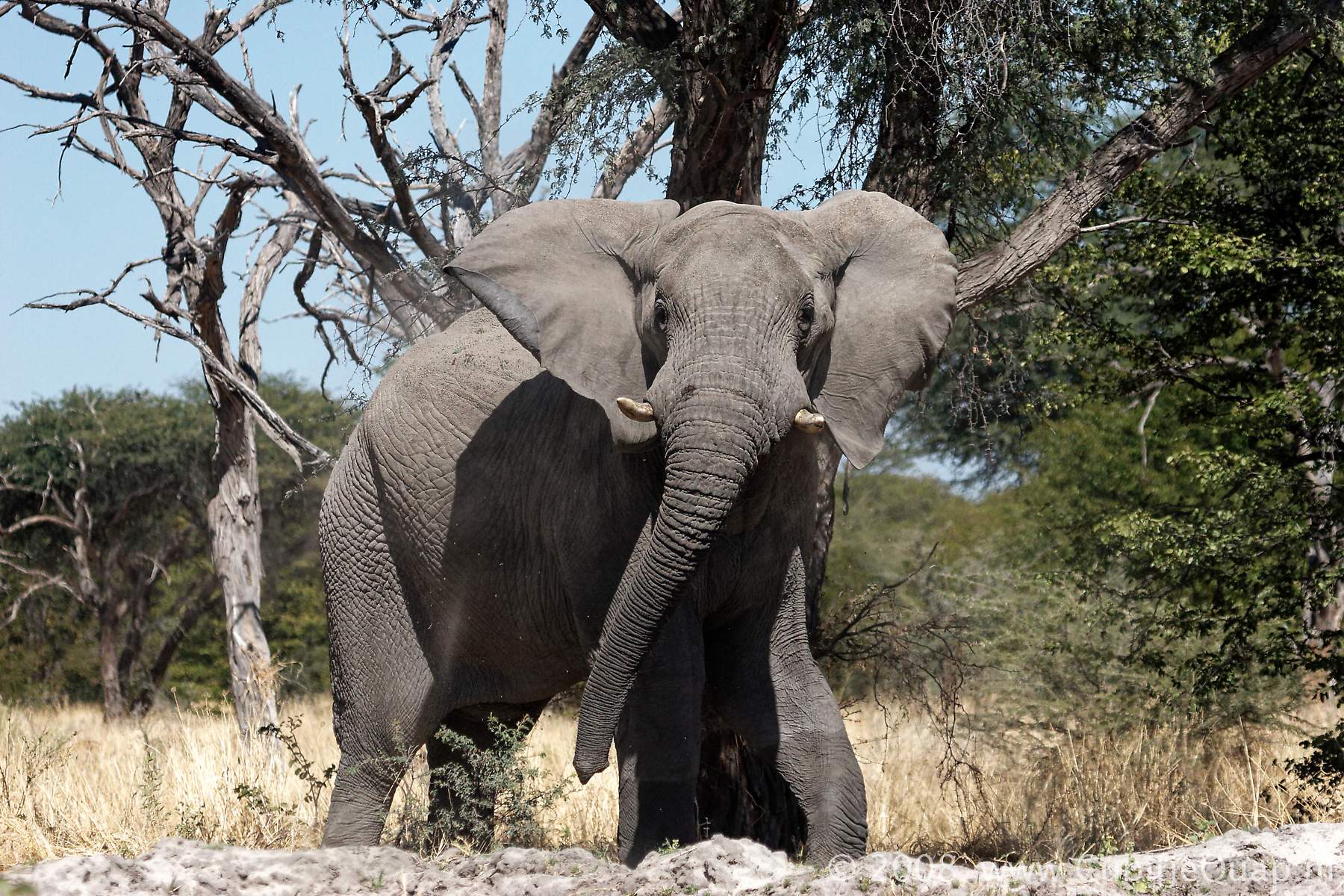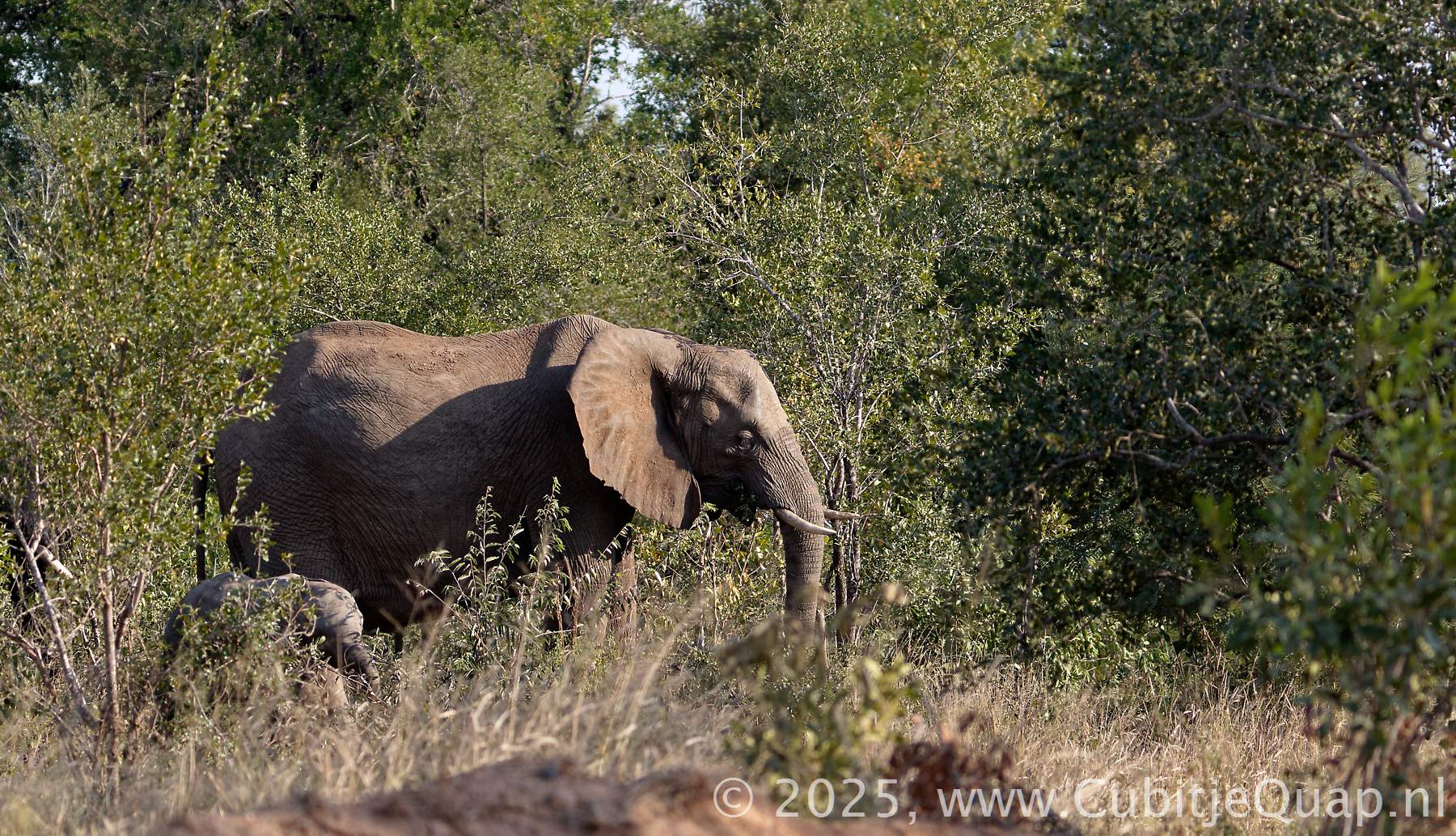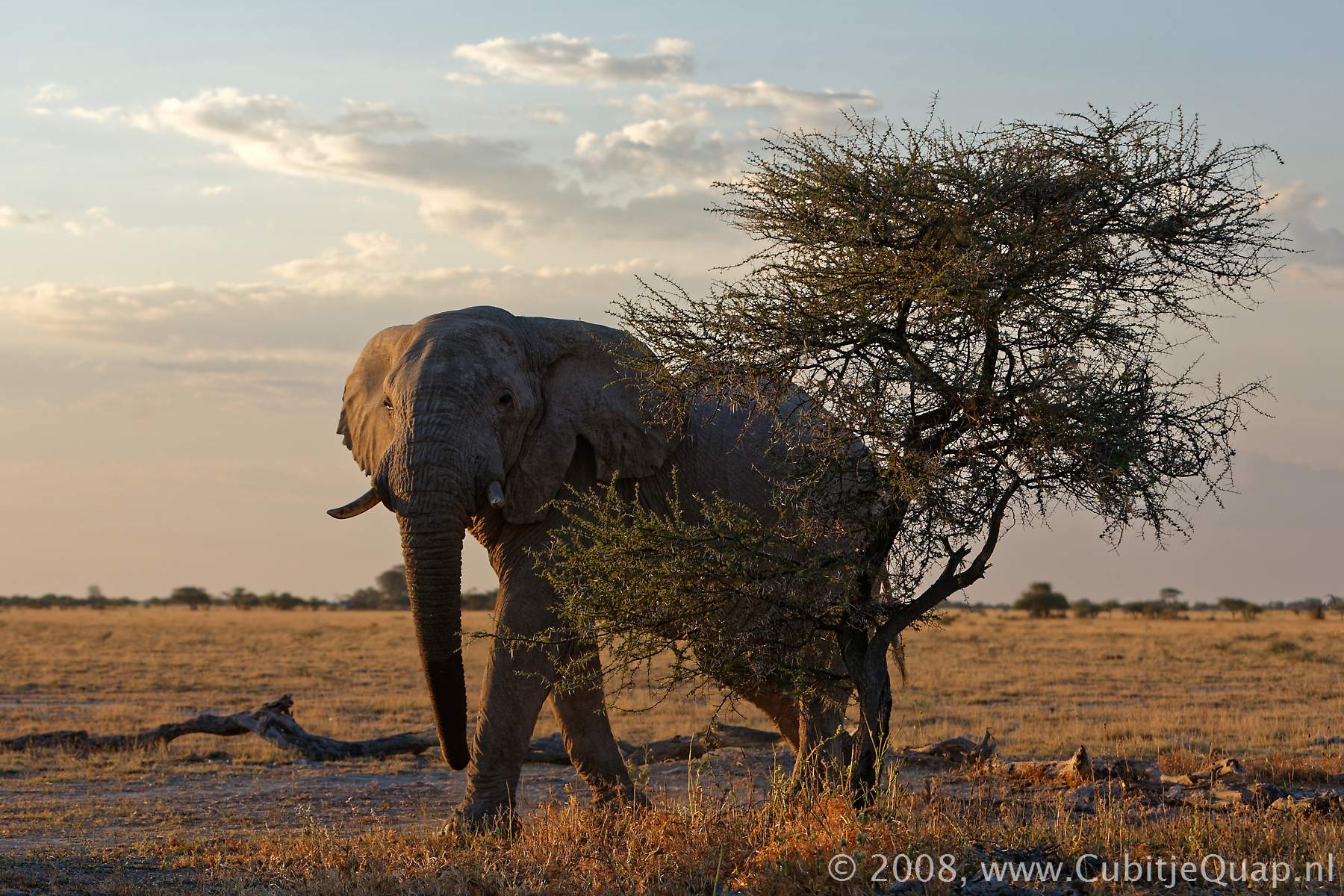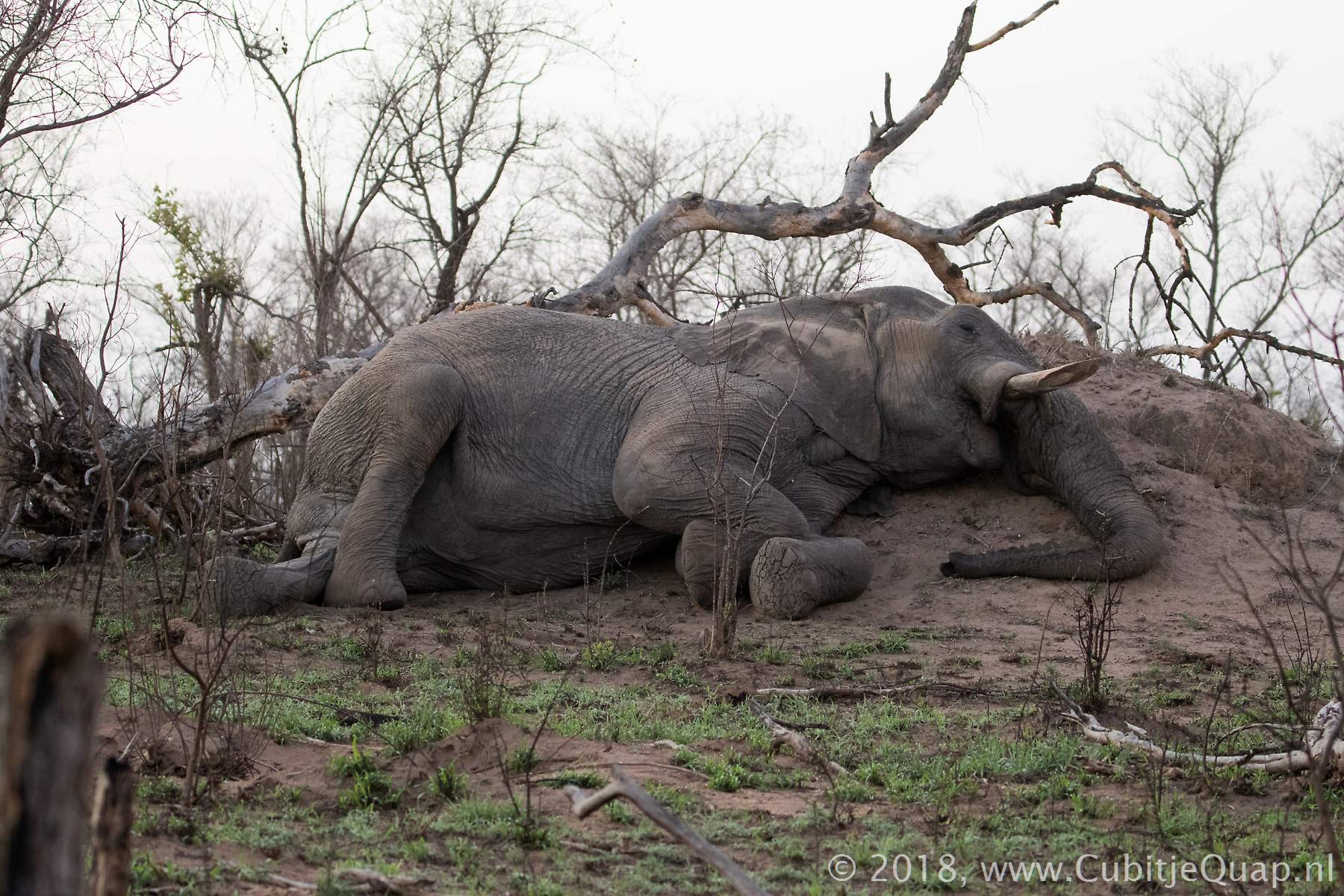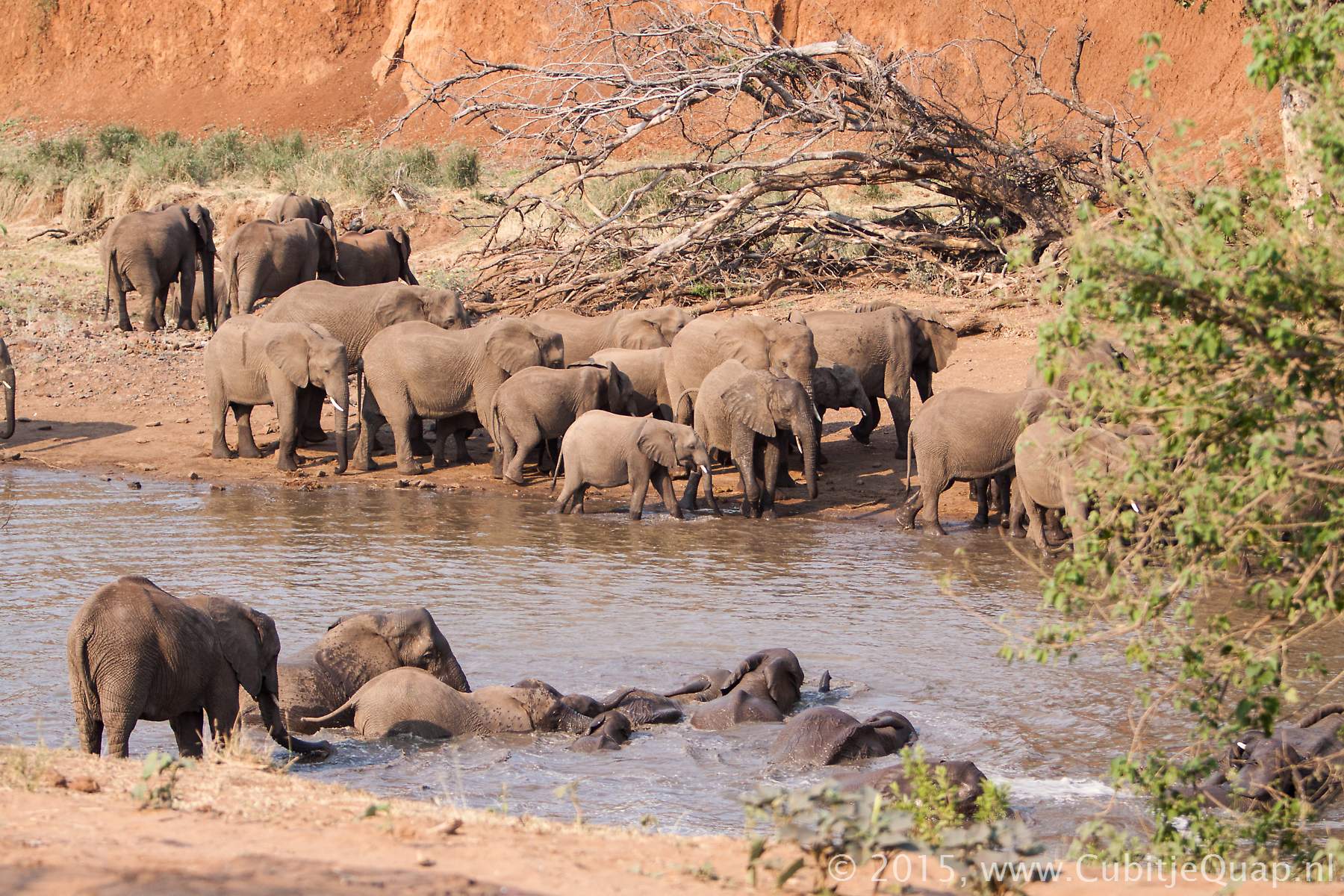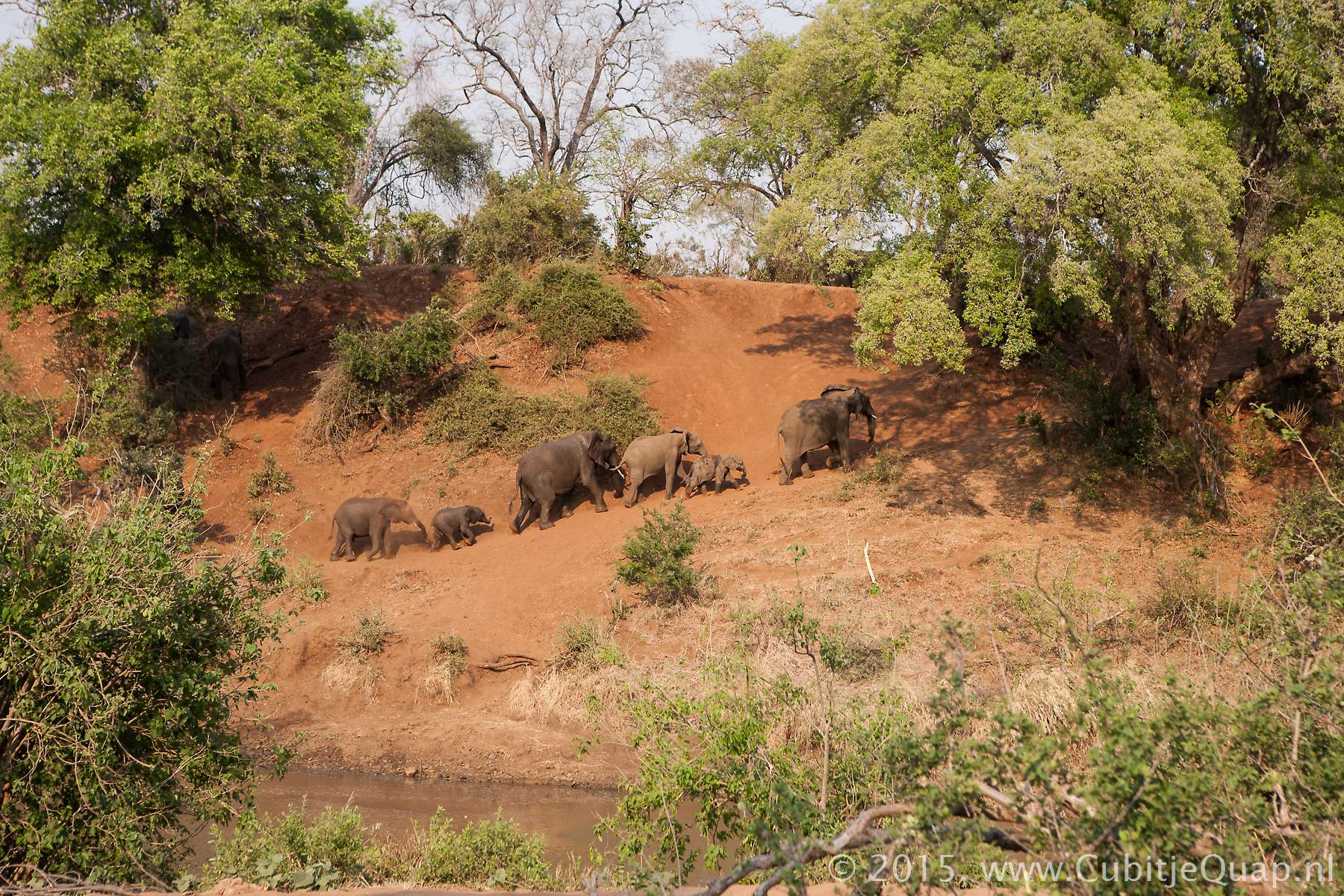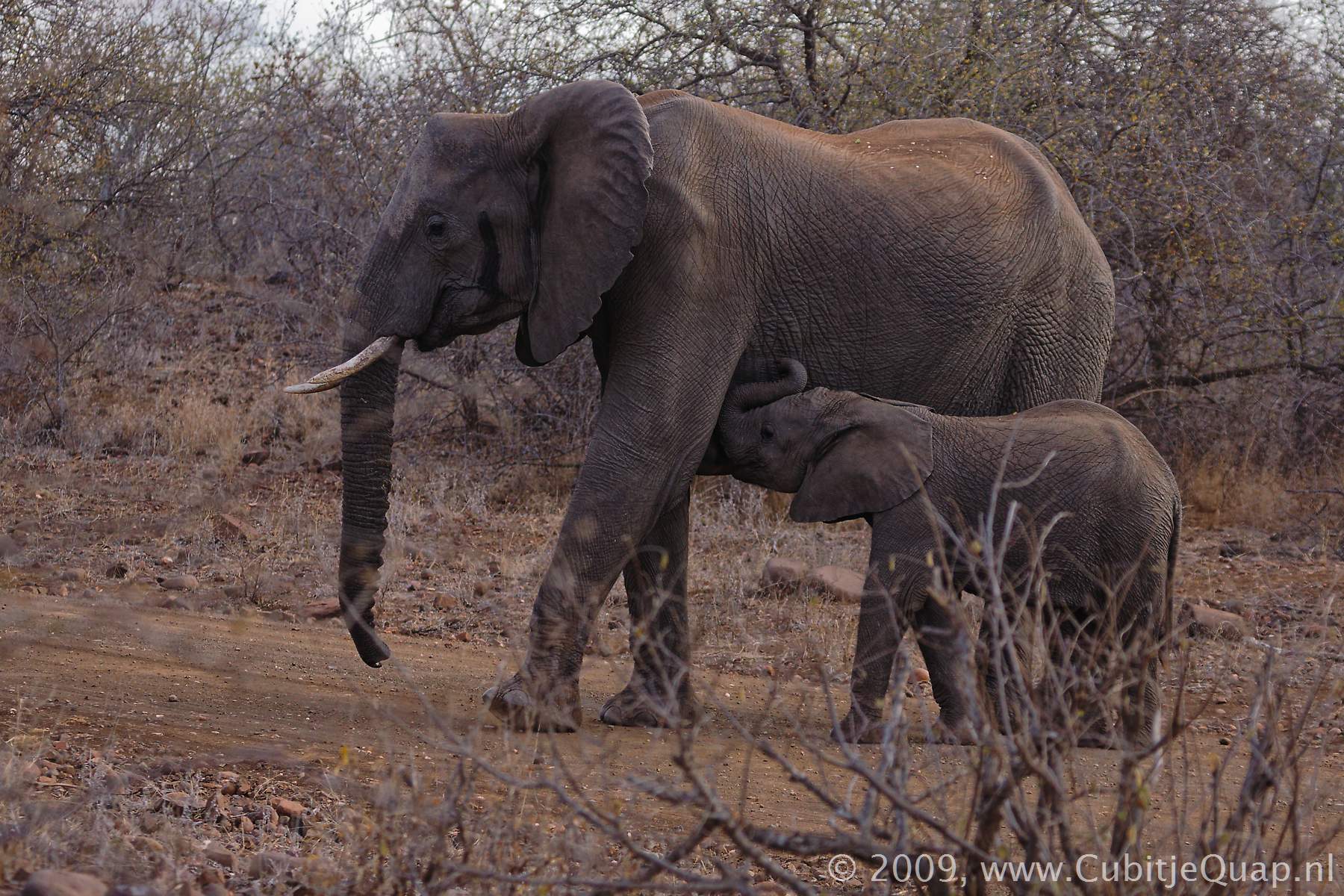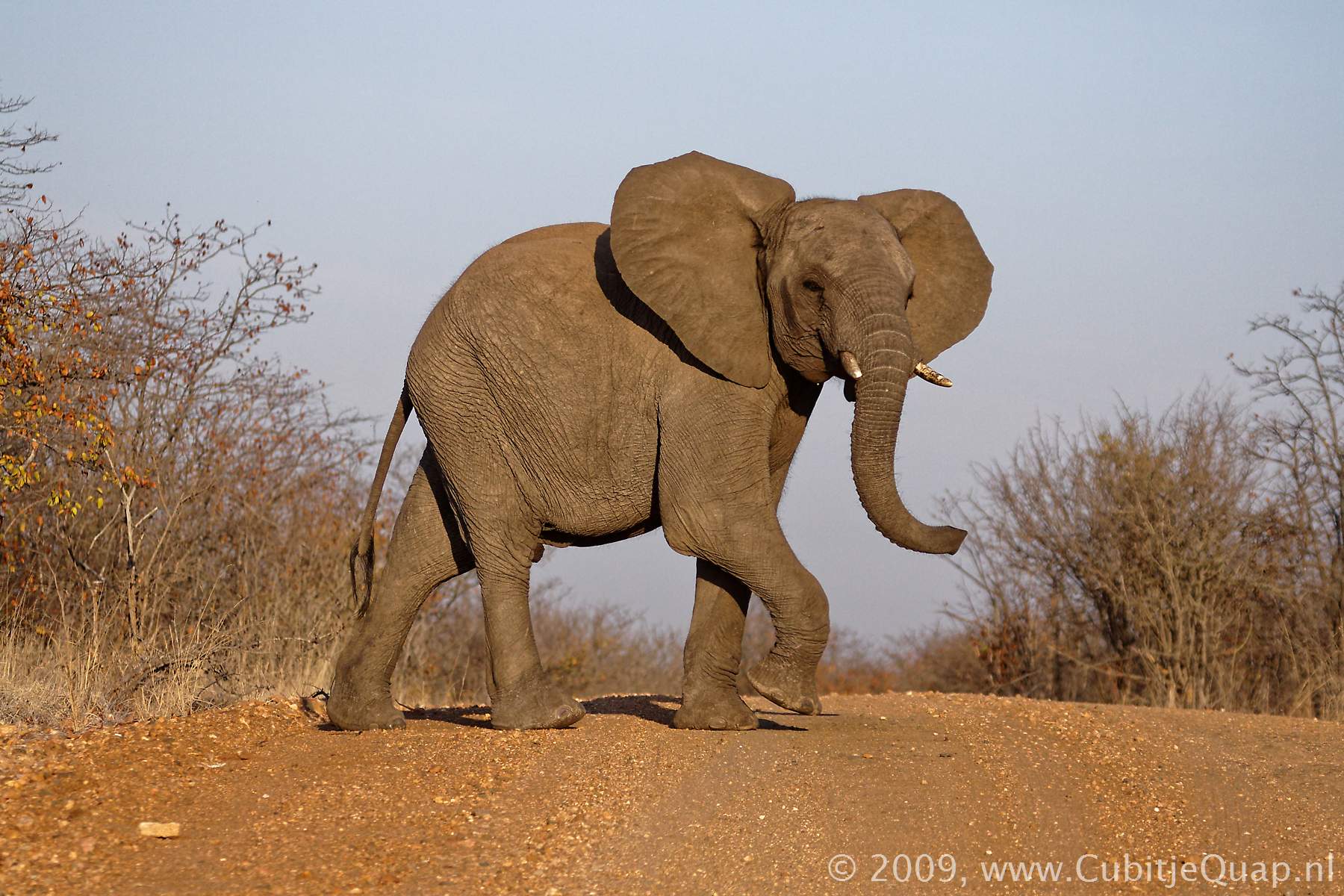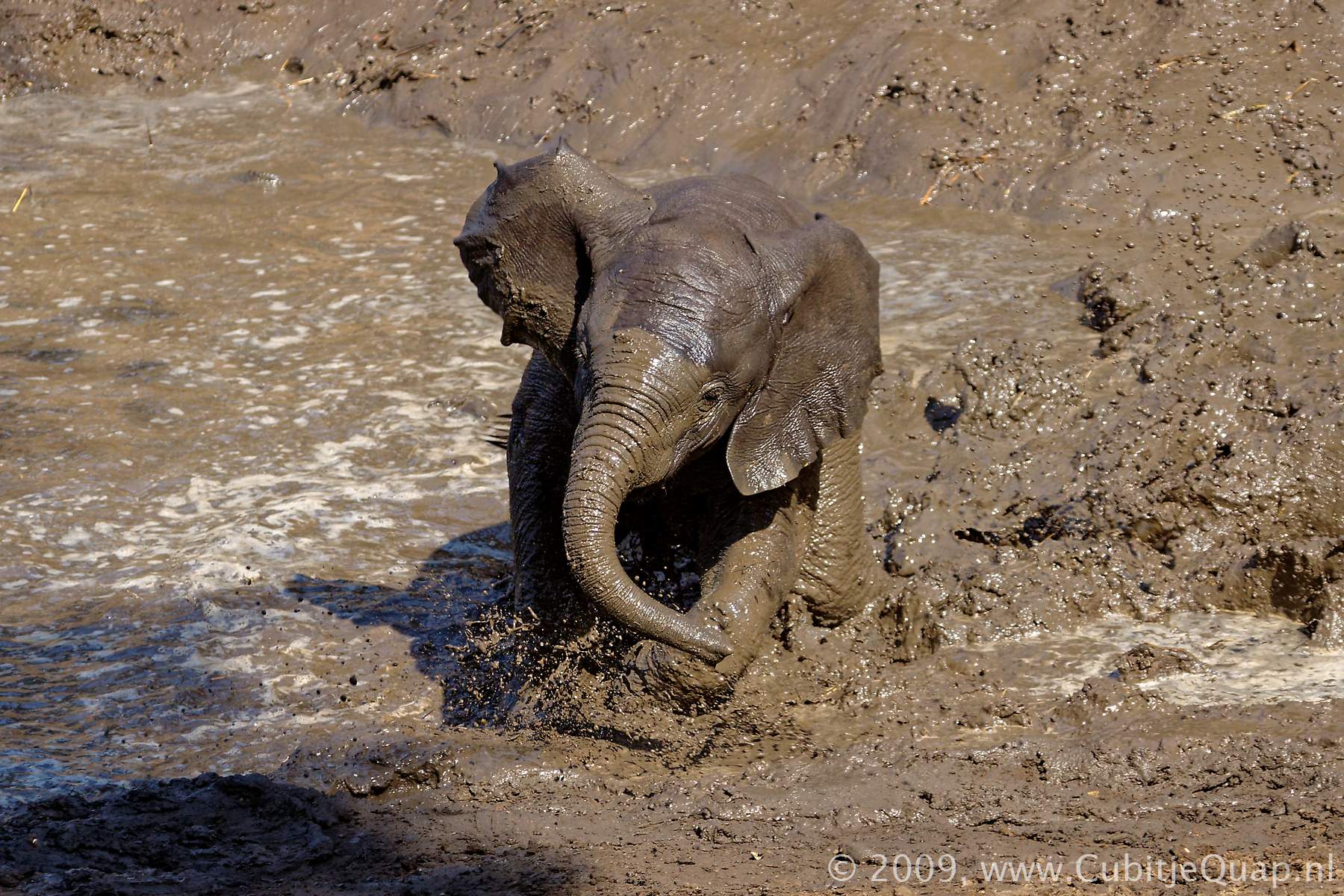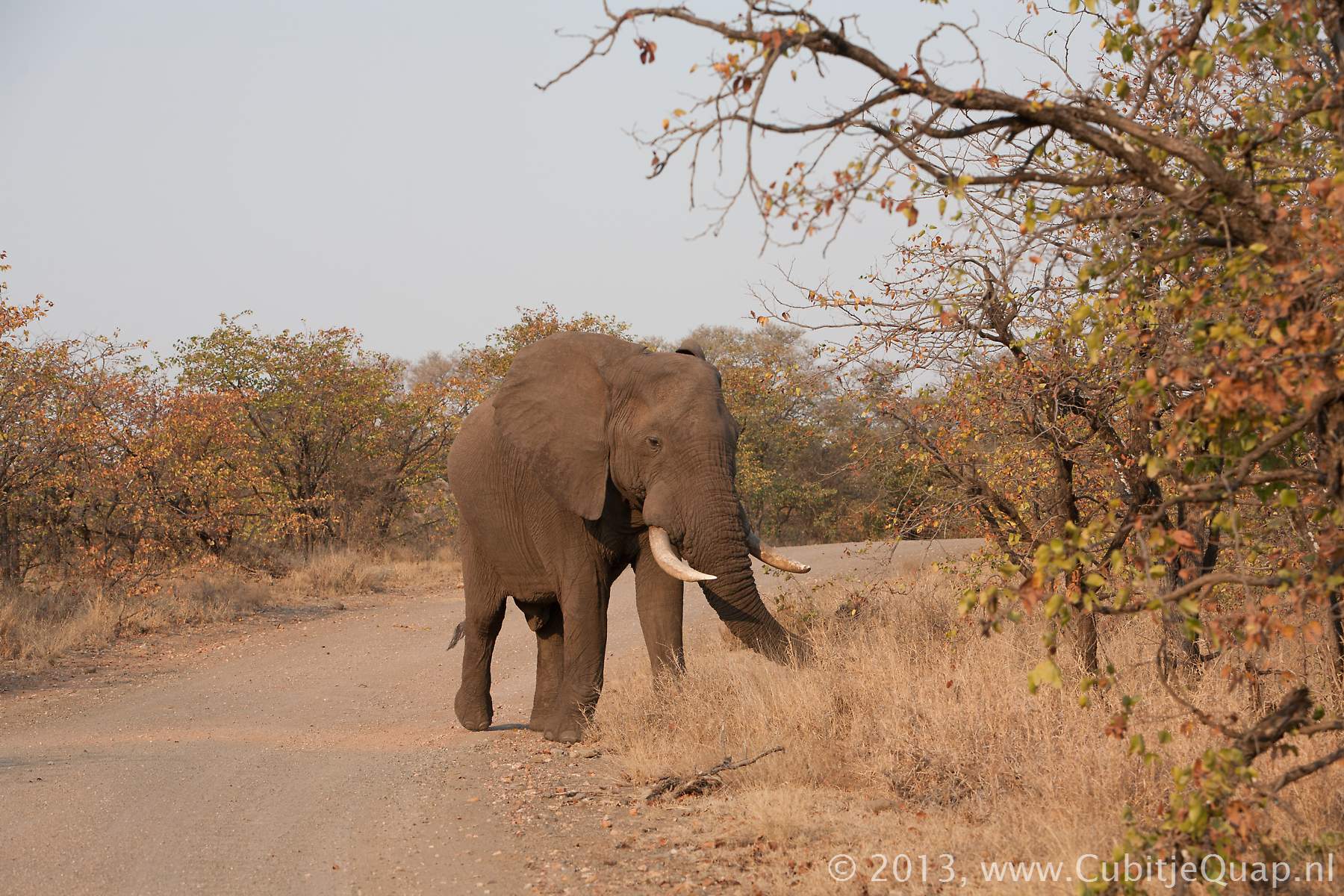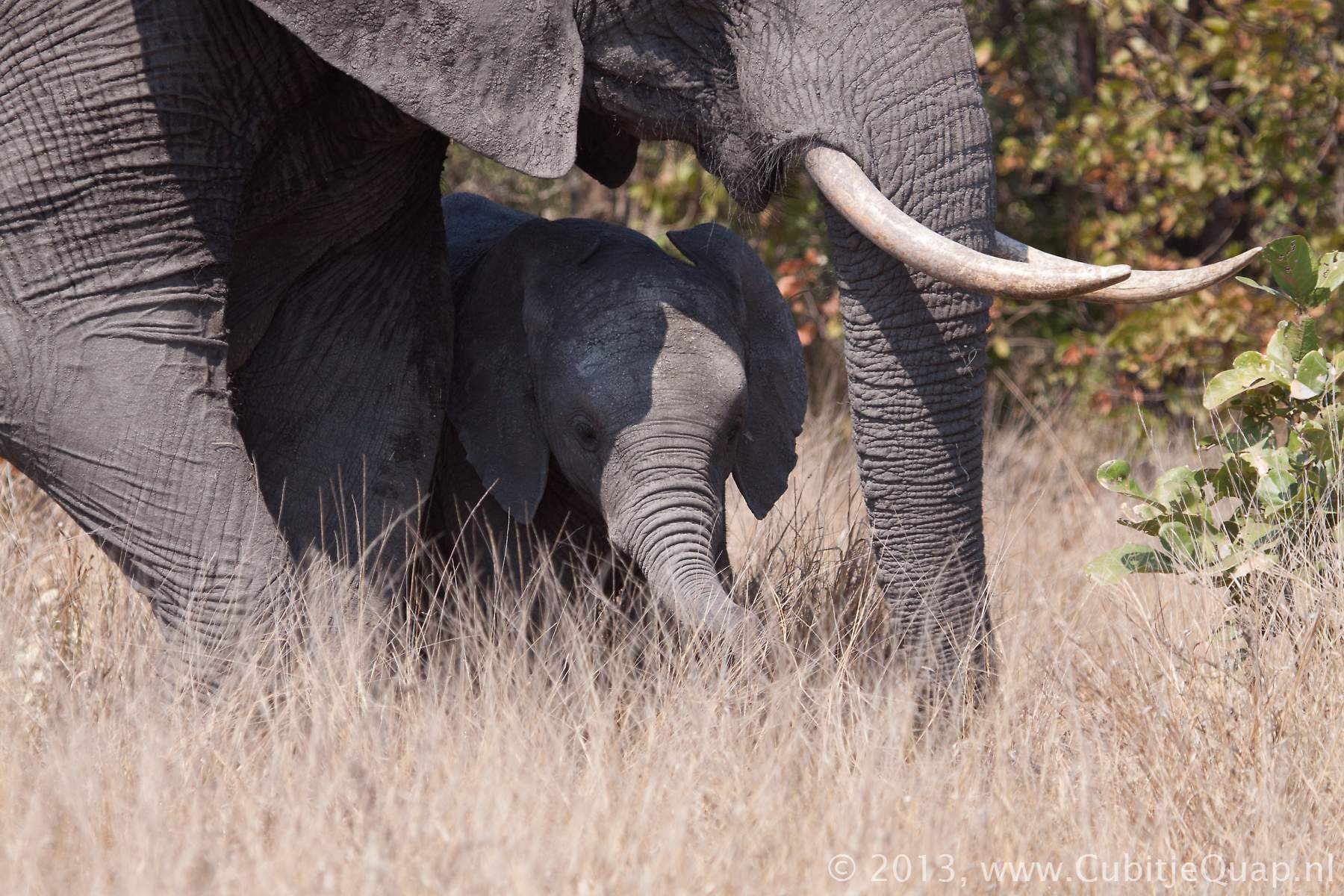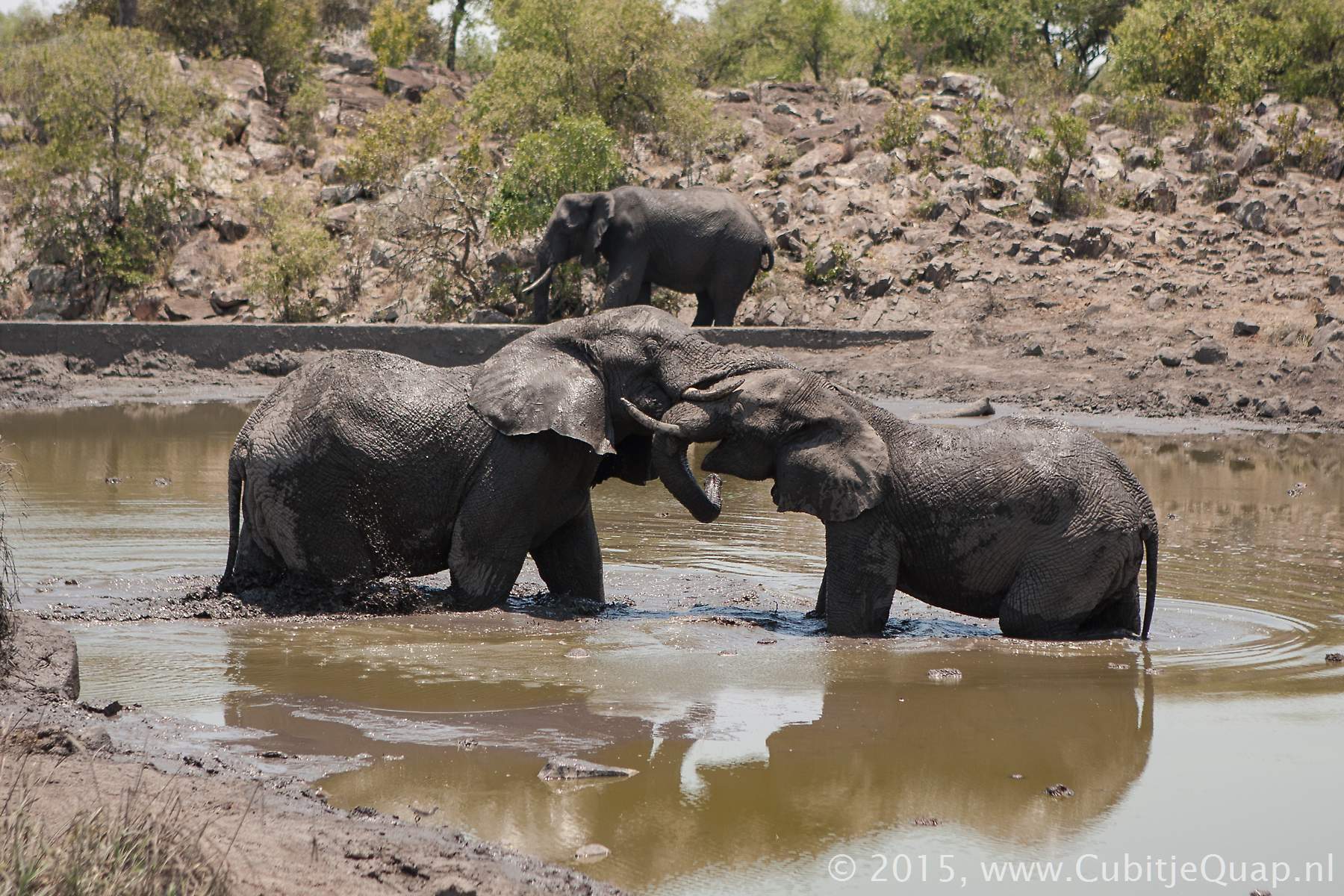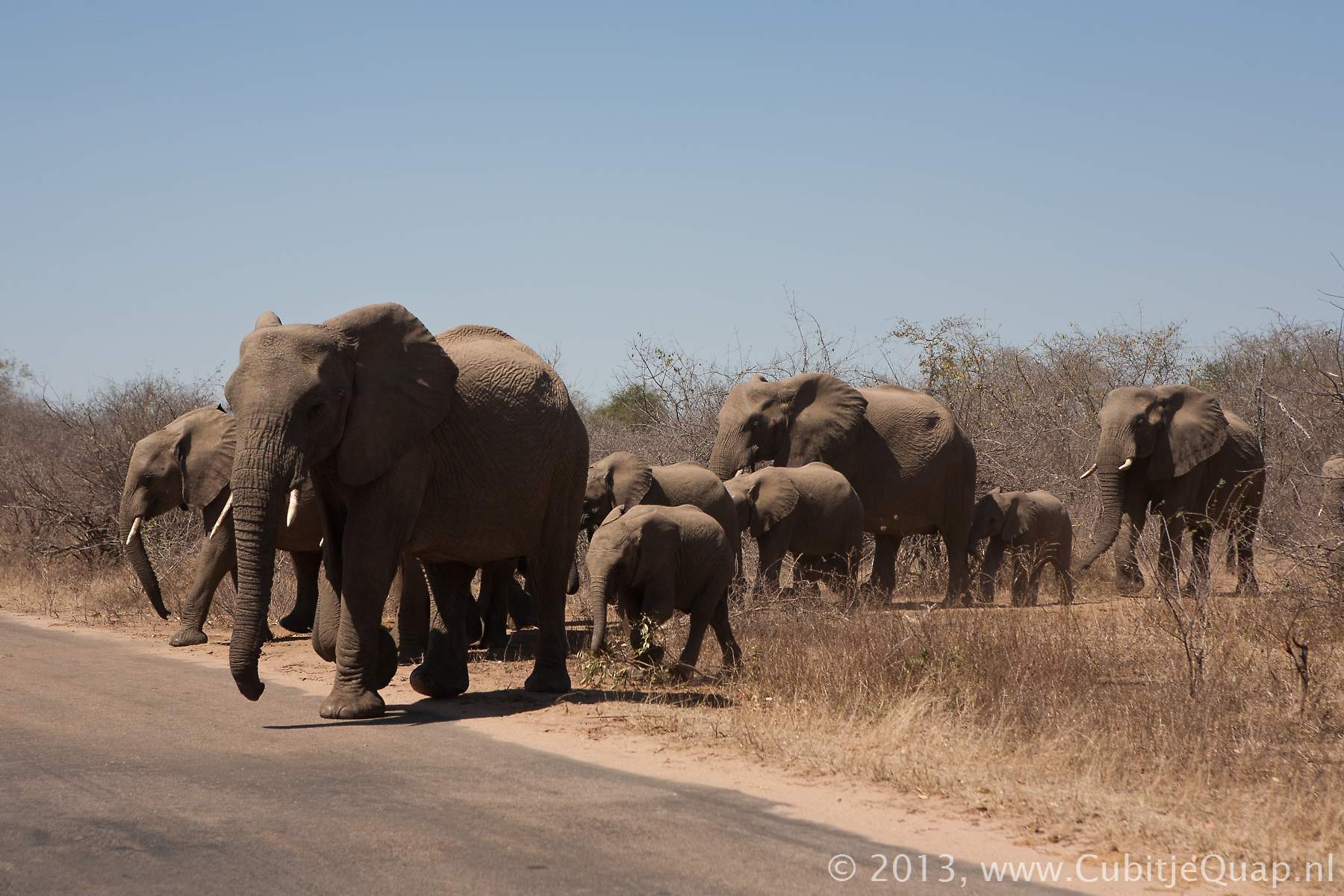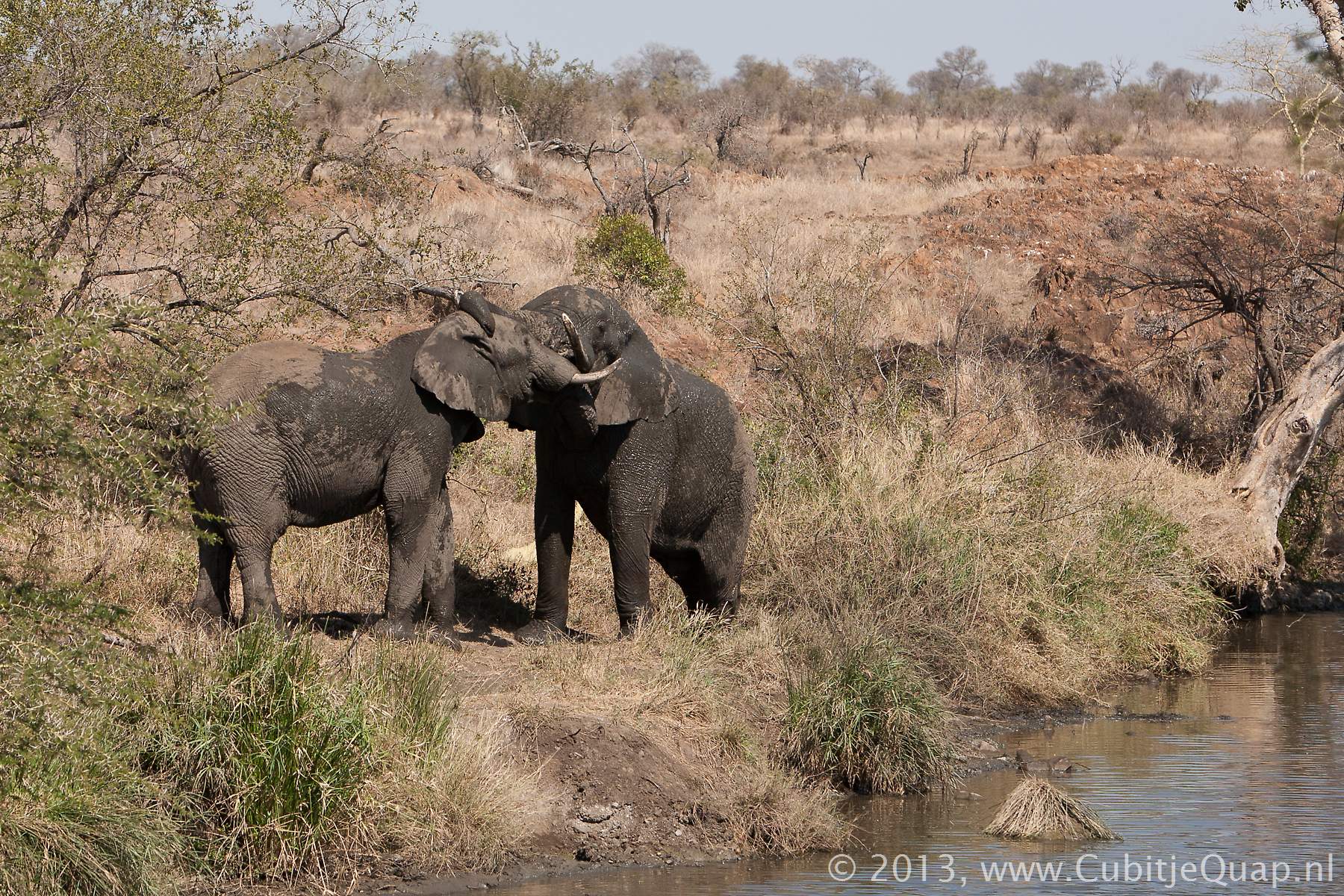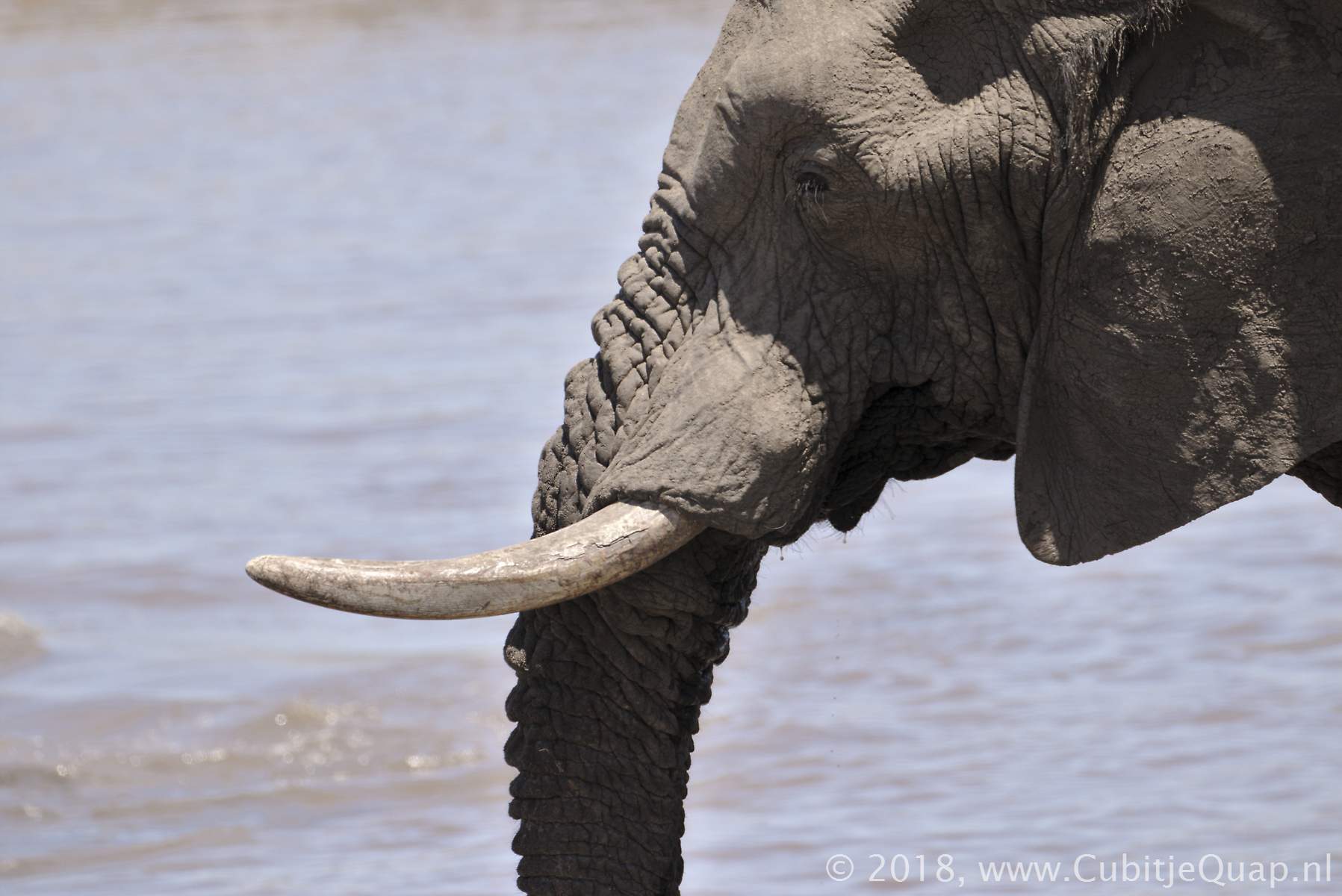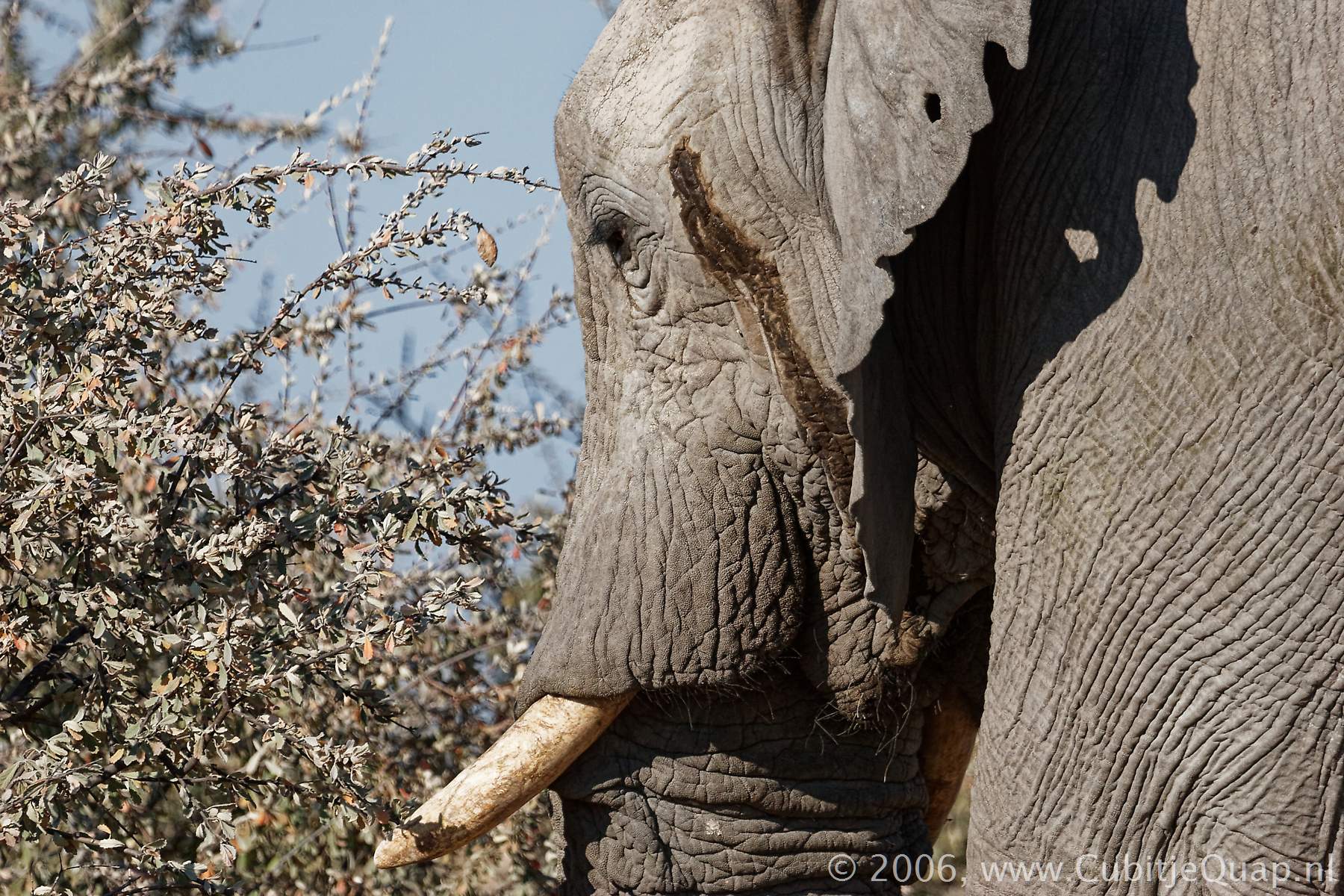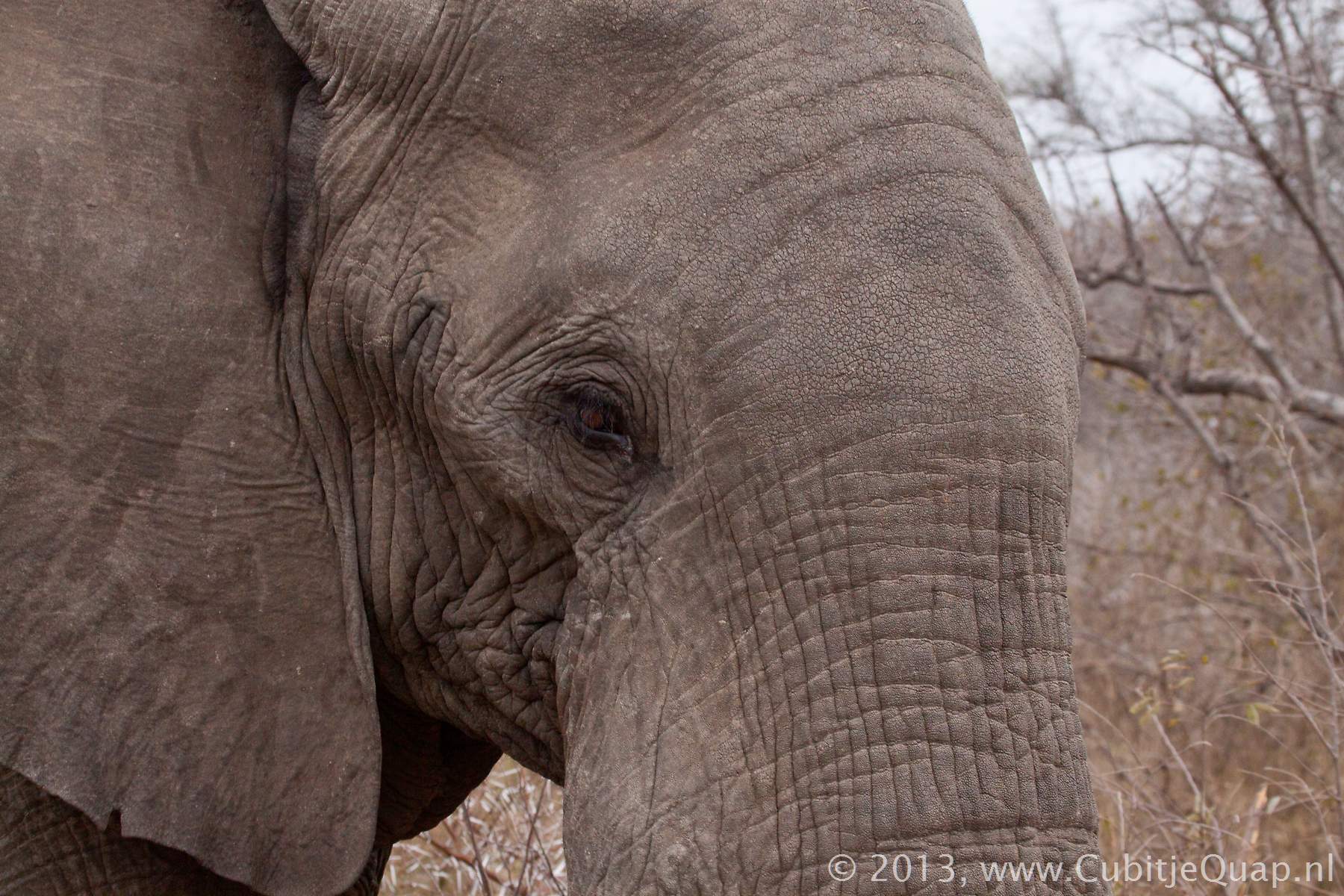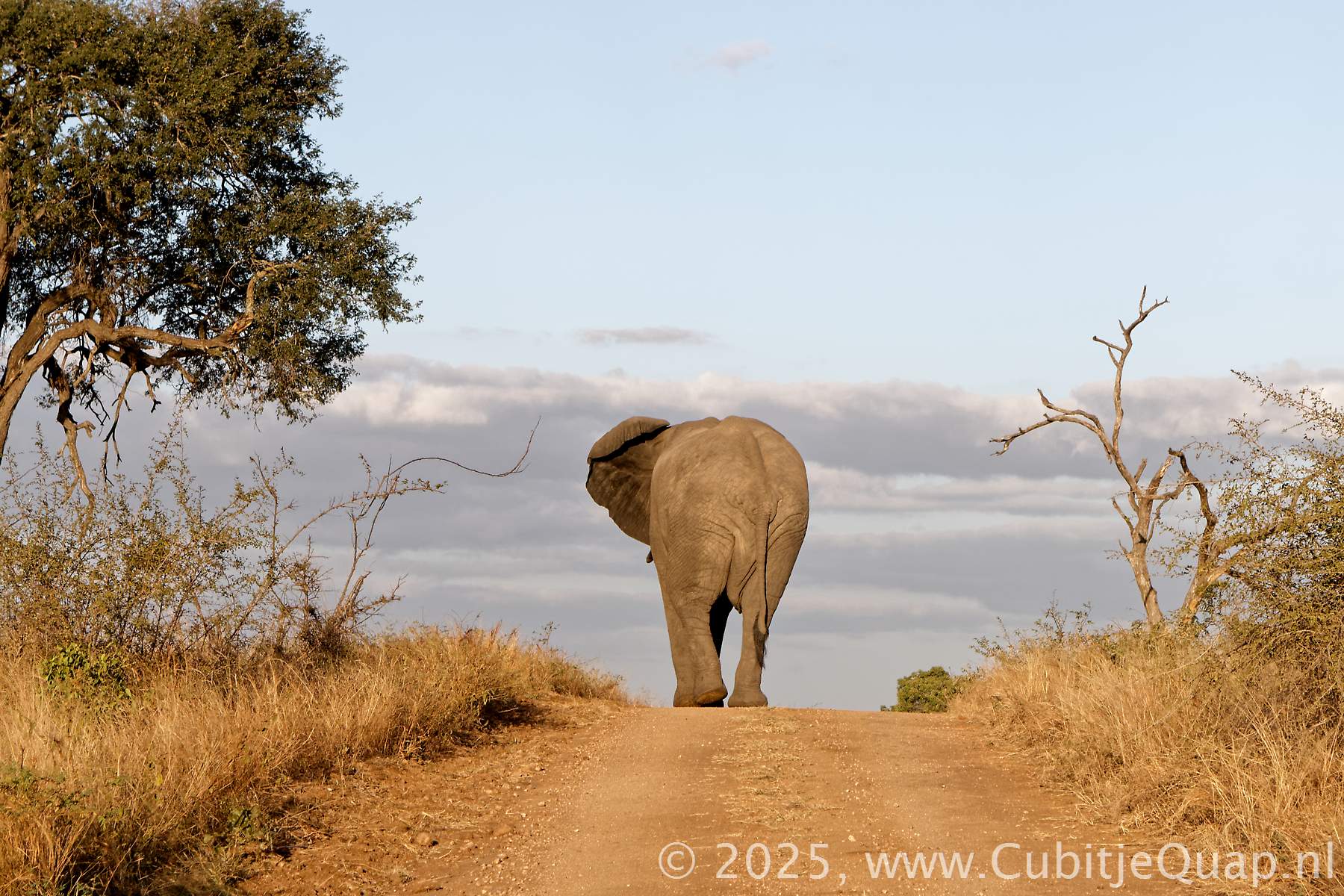Cow: Shoulder height 250 - 340 cm; tail 150 cm; mass 2800 - 3500 kg
An elephant cannot be mistaken for any other species. It is the largest land mammal in the world.
Apart from its large size it is characterized by the long trunk, large ears and the (normal) presence of tusks. The trunk is extremely mobile and almost as efficient as the human hand. The large ears serve as a display function but also assist in cooling the body. The backs of the ears are well supplied with blood vessels, and as the ears are flapped the blood is cooled. Elephants may also squirt water behind the ears to cool the blood. Tusks are characteristic of most elephants, although some individuals and even populations may be tuskless. Elephant tusks continue to grow throughout life but because of continuous wear and breakage they never reach their full potential length.
If left uncontrolled, herds that are gathering food may inflict considerable damage on the vegetation and destroy their own habitat, not only for themselves, but also for other species.
When adult cows are in breeding, adult bulls join the family herd. They leave to join bachelor groups afterwards.
Elephants are active both by night and by day. During the heat of the day elephants usualy rest in the shade. Generally the elephant is a peaceful animal, but it can become dangerous when wounded, sick or in defence of a small calf.
Wikipedia - war elephants
Who wants to shoot an elephant, a report on one of the last elephant hunts in Botswana by Wells Tower
(sc) Loxodonta africana
(nl) Afrikaanse olifant
(af) Afrikaanse olifant

